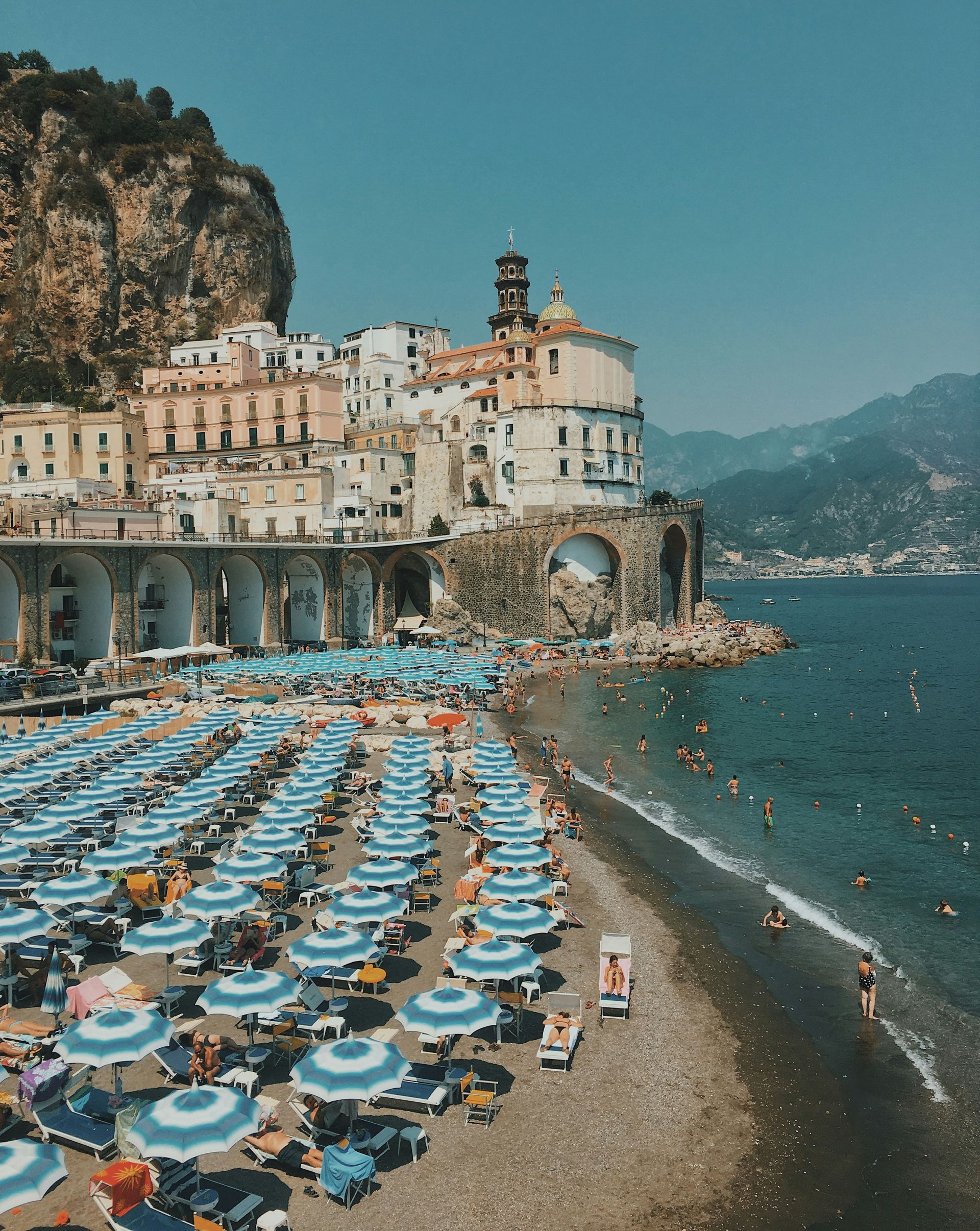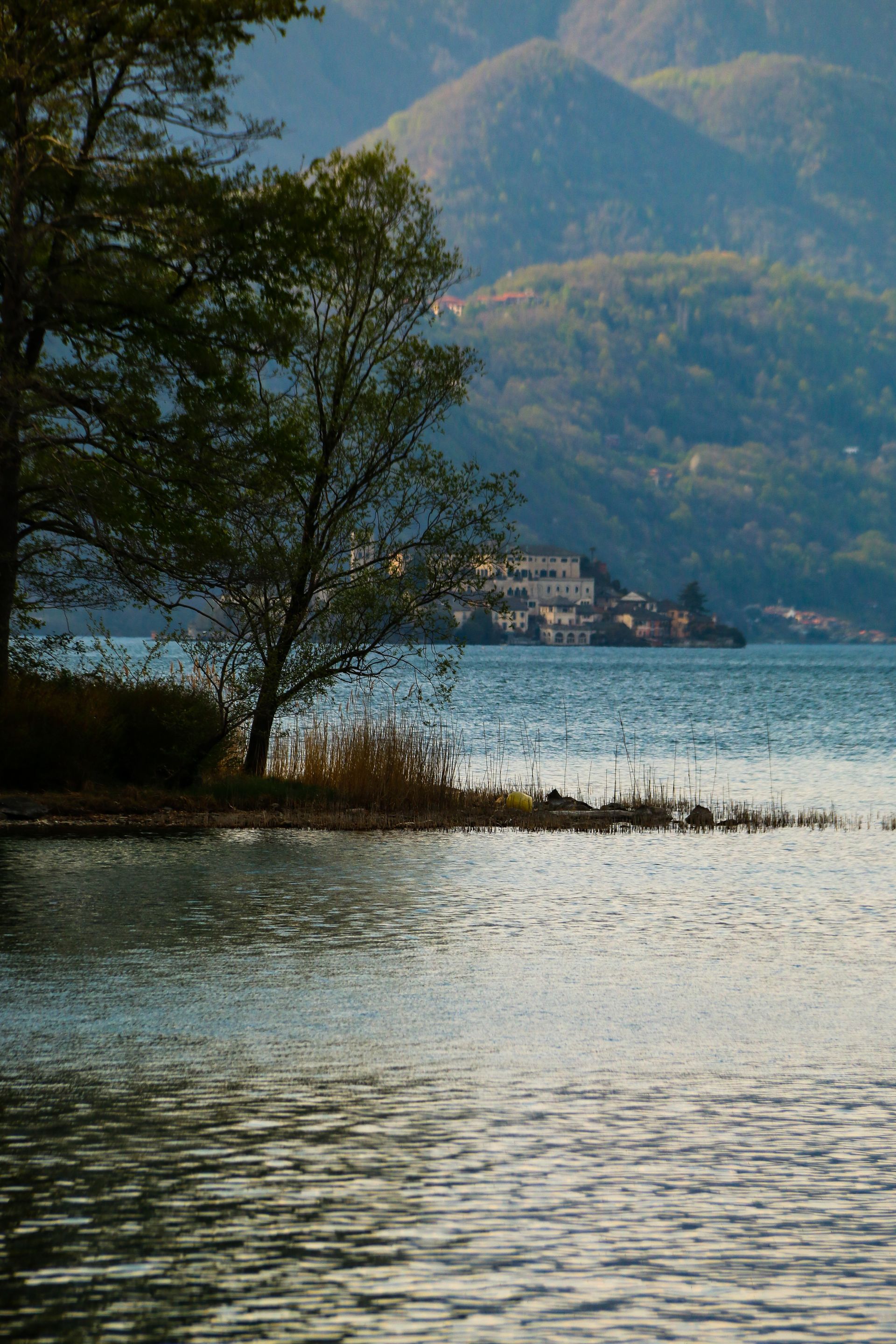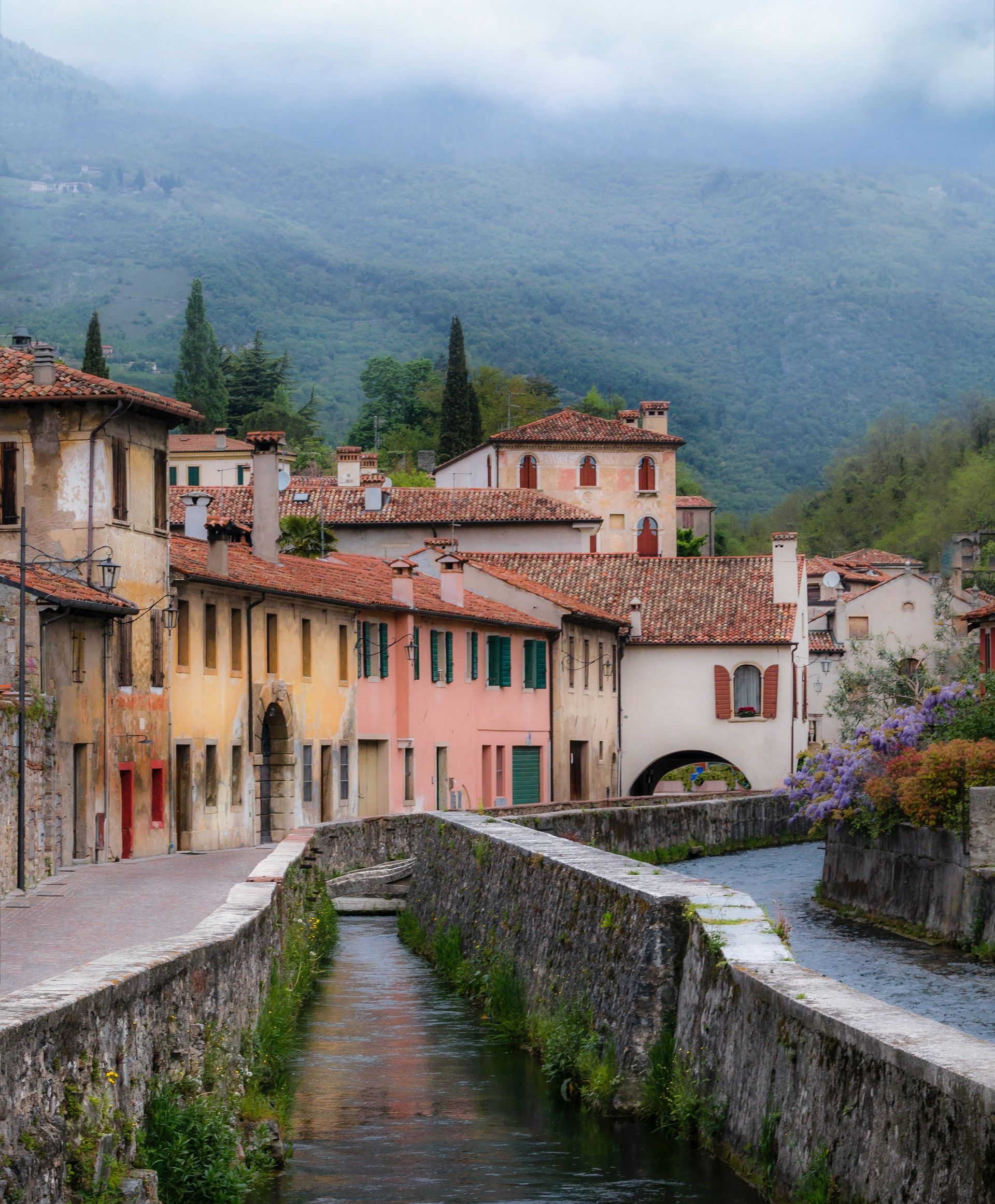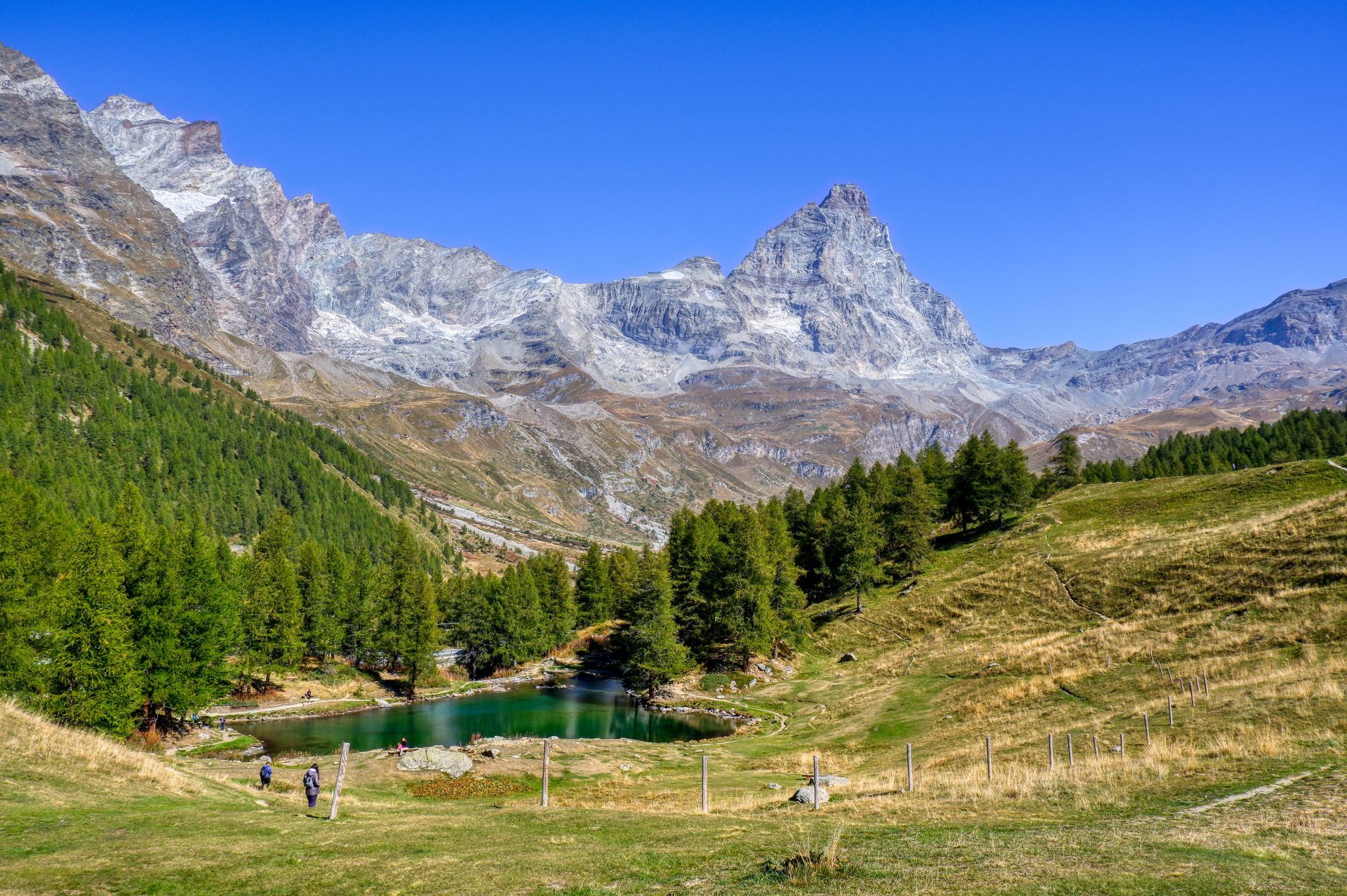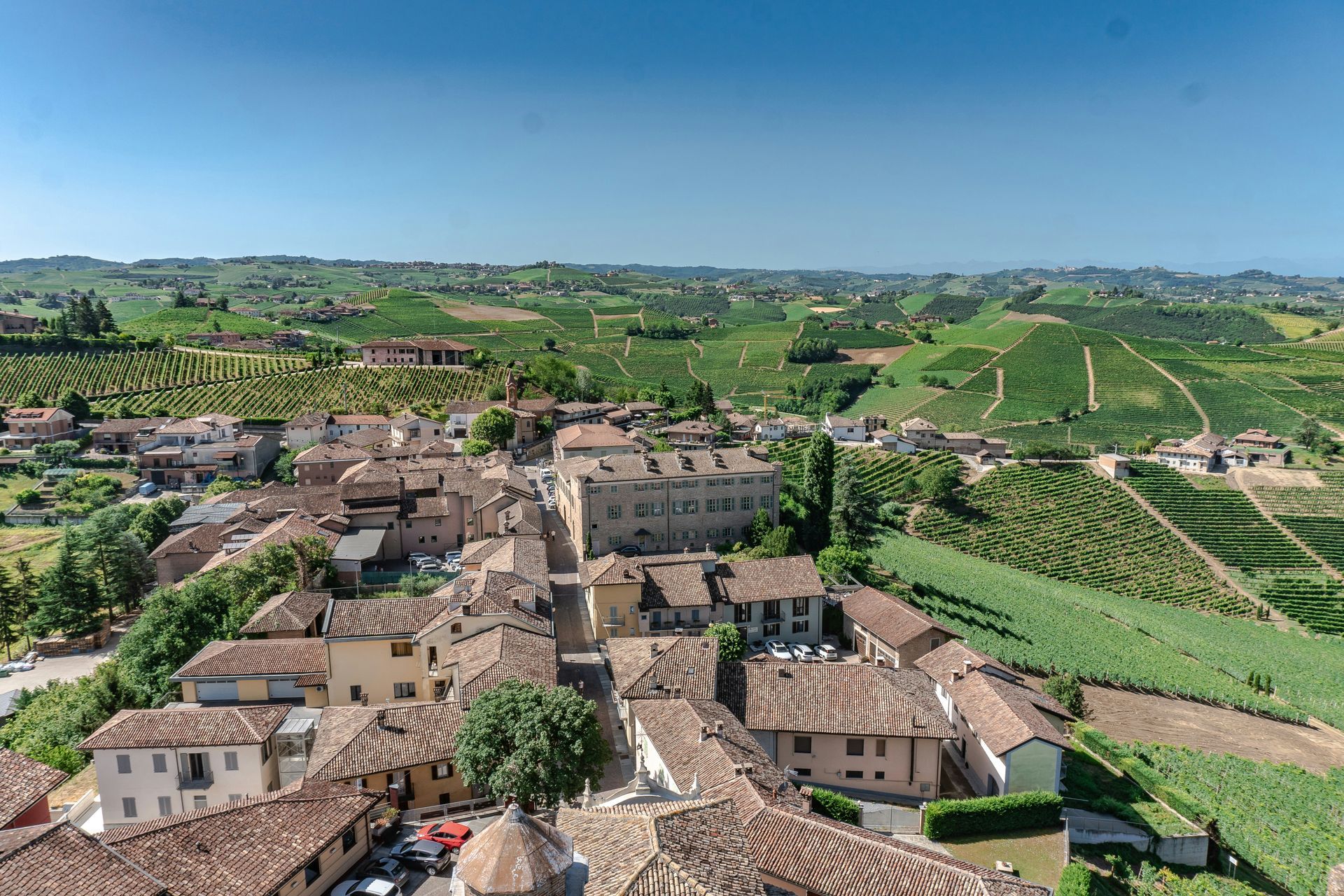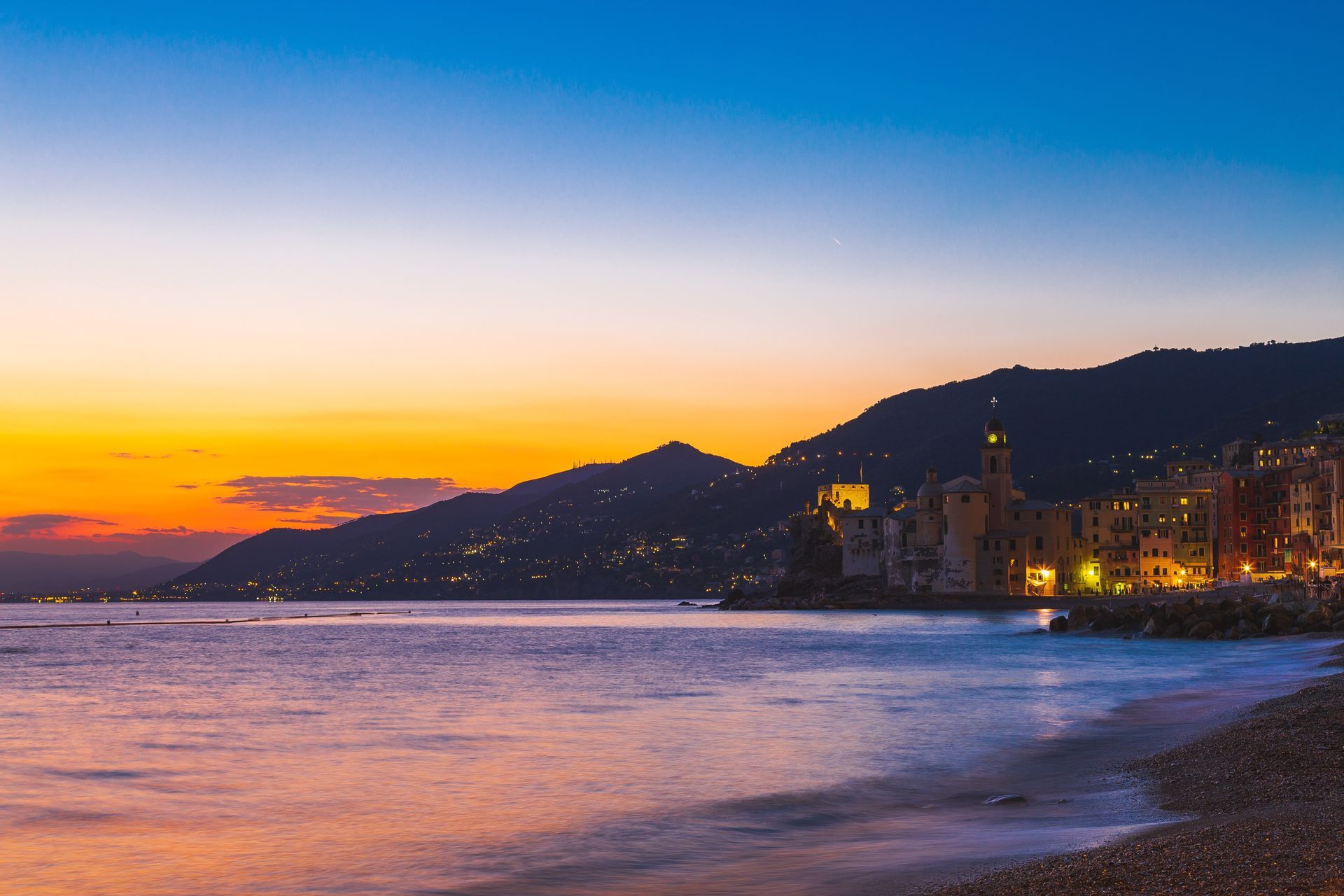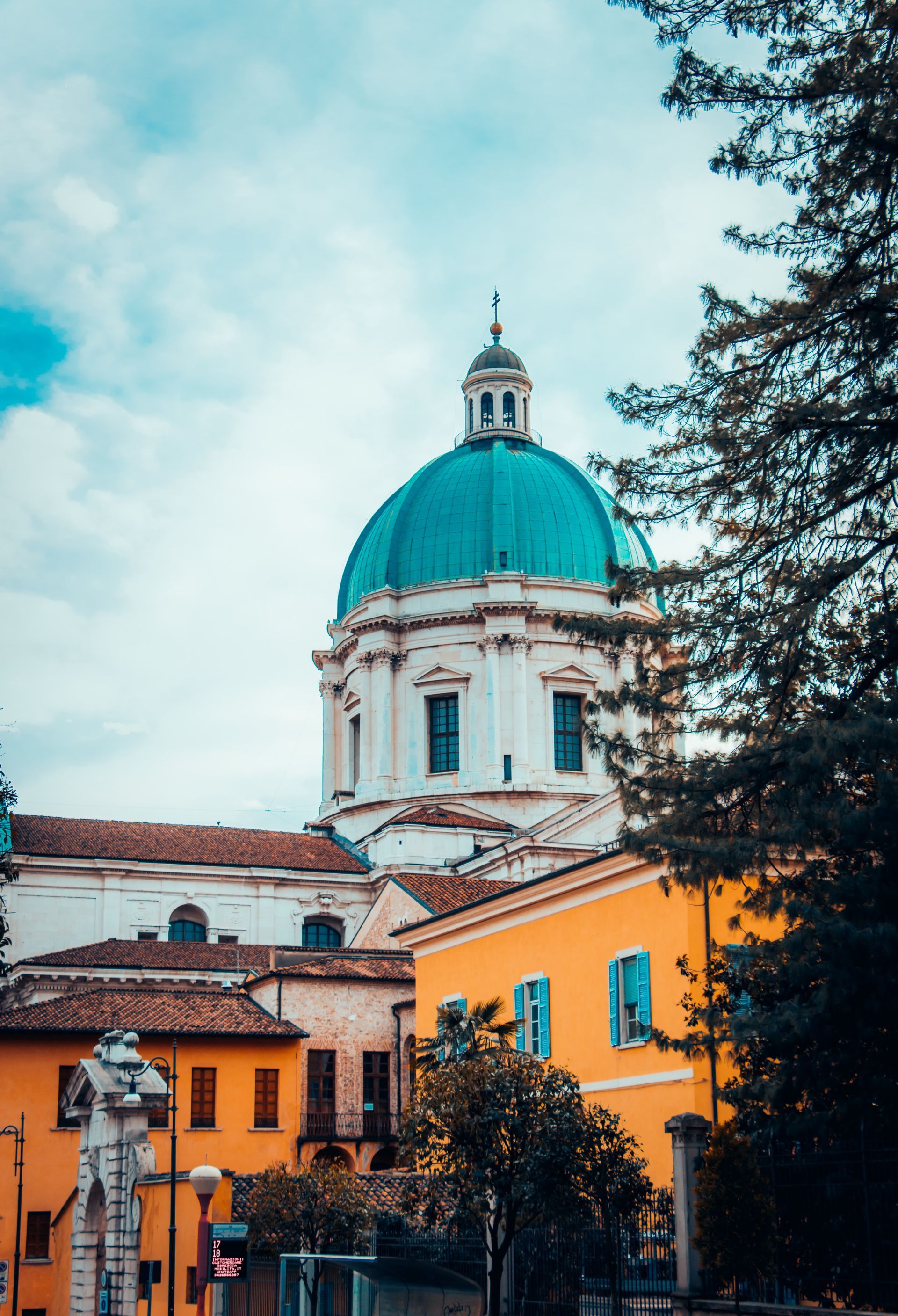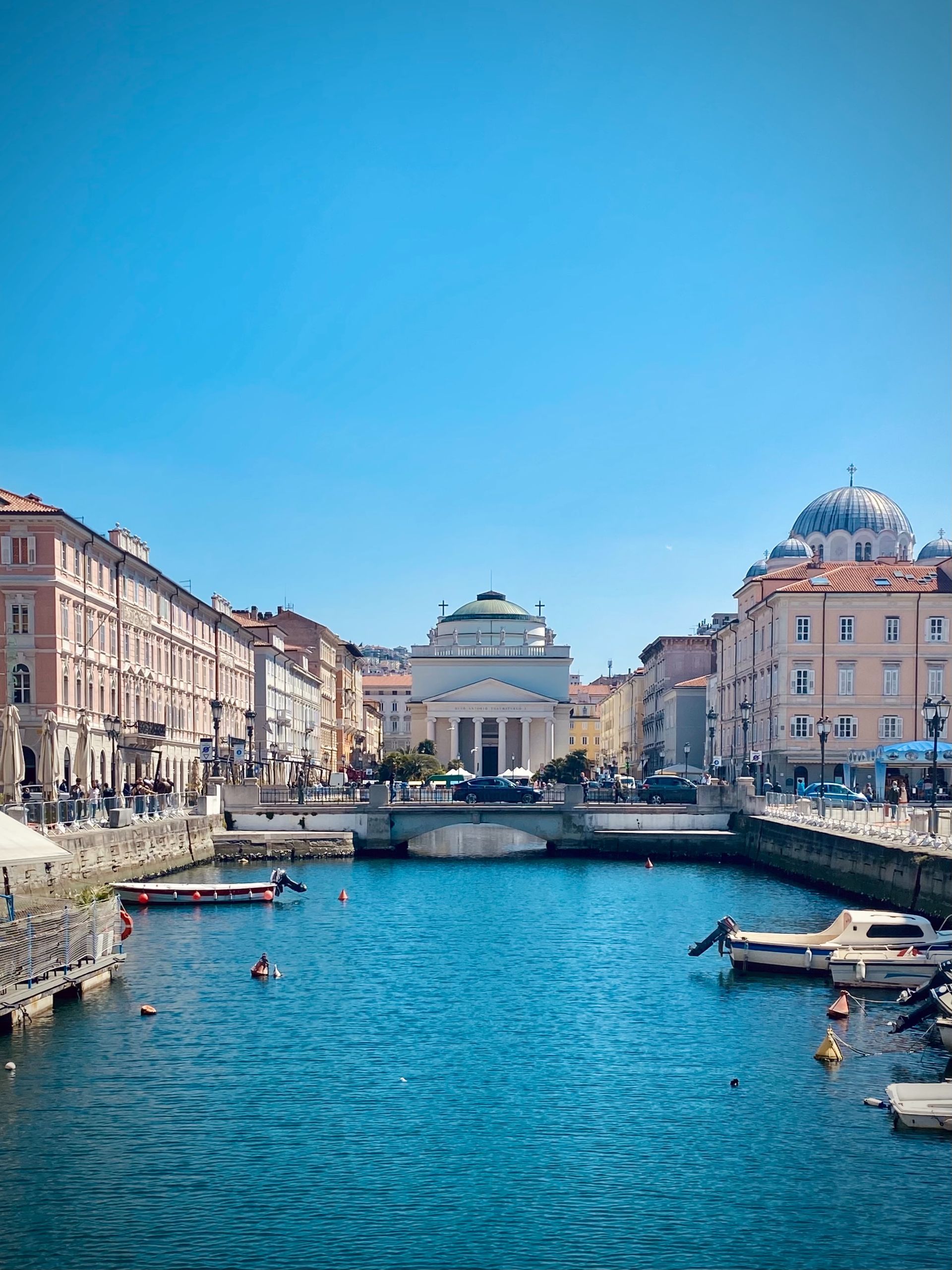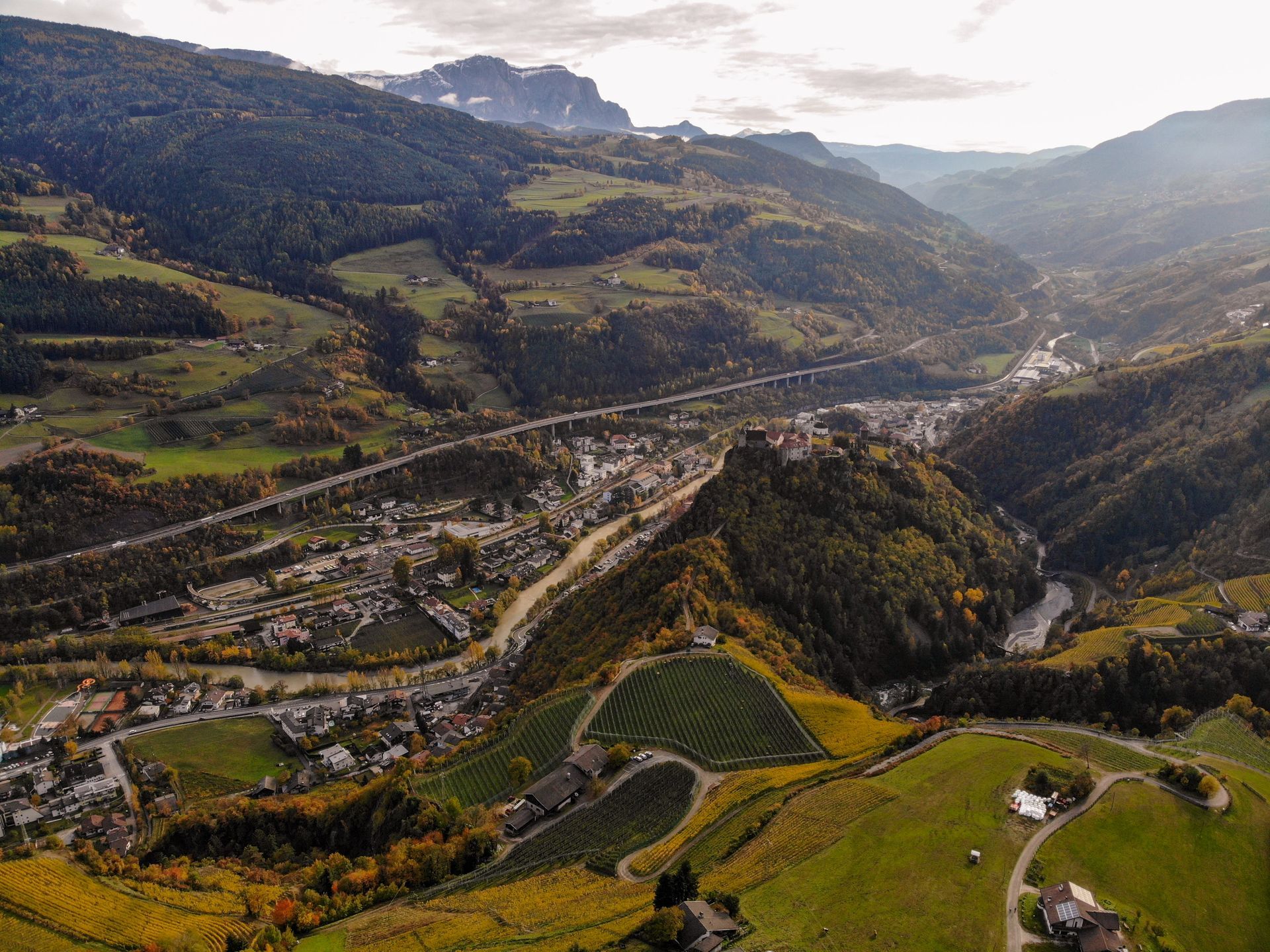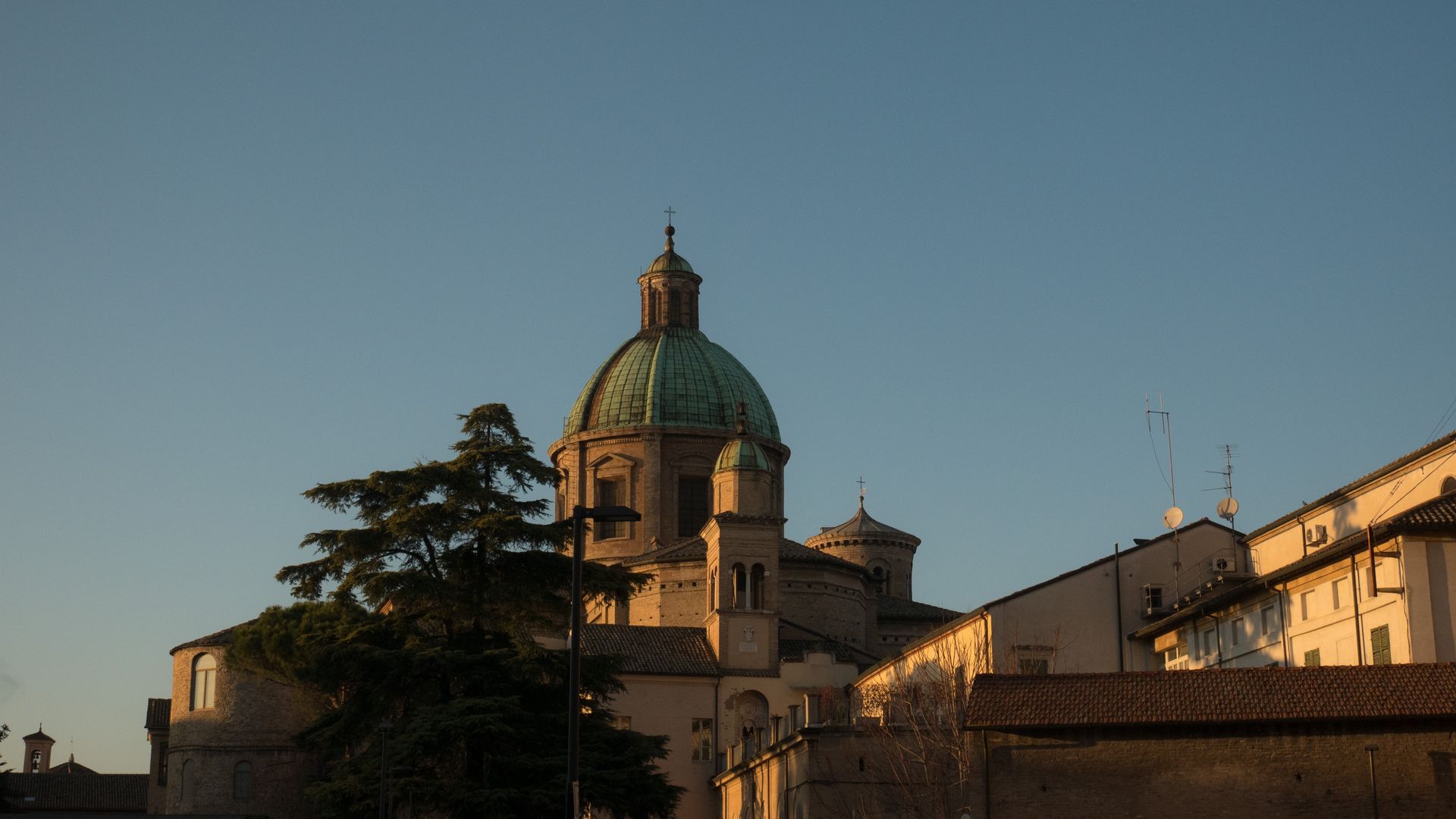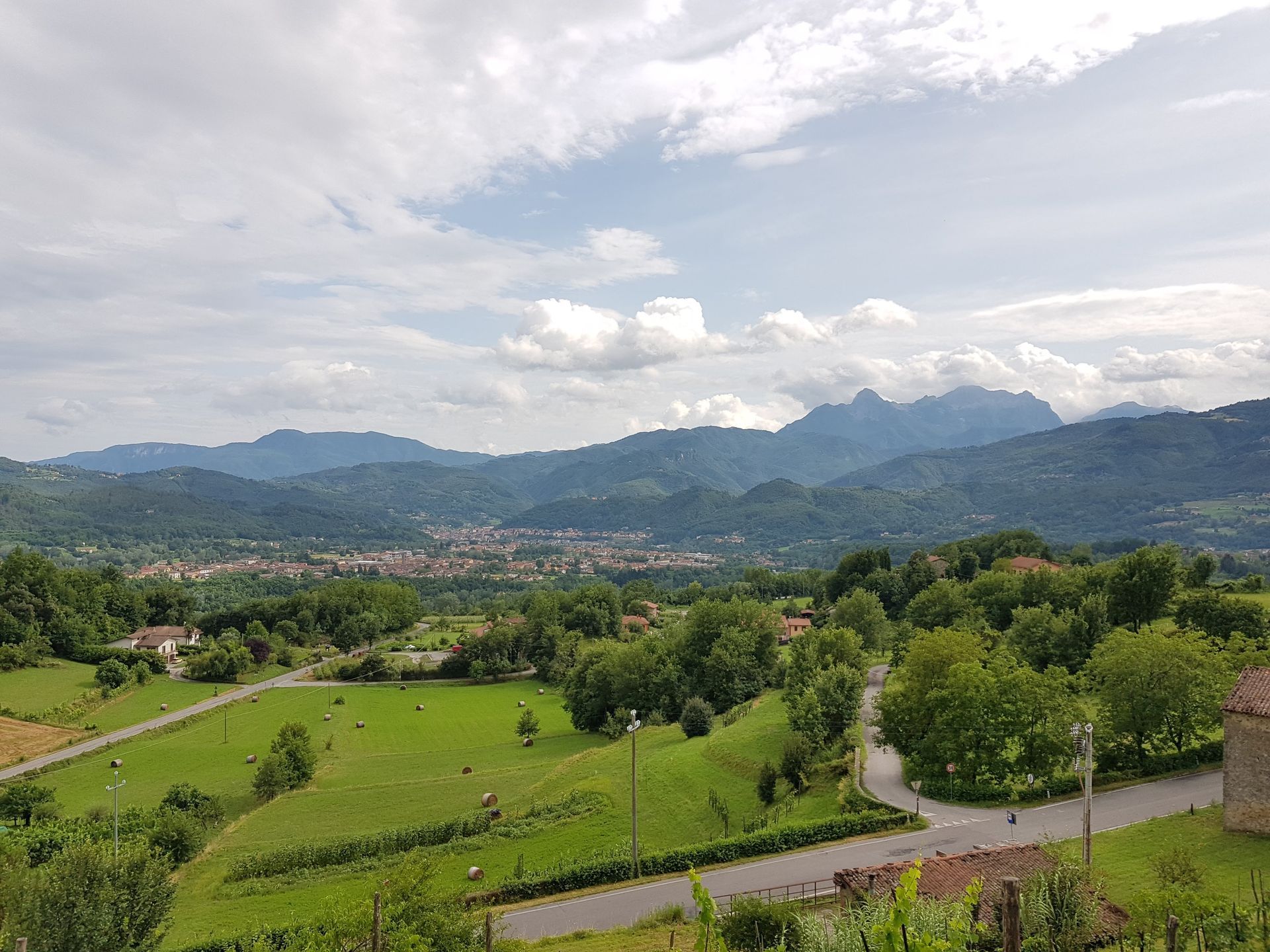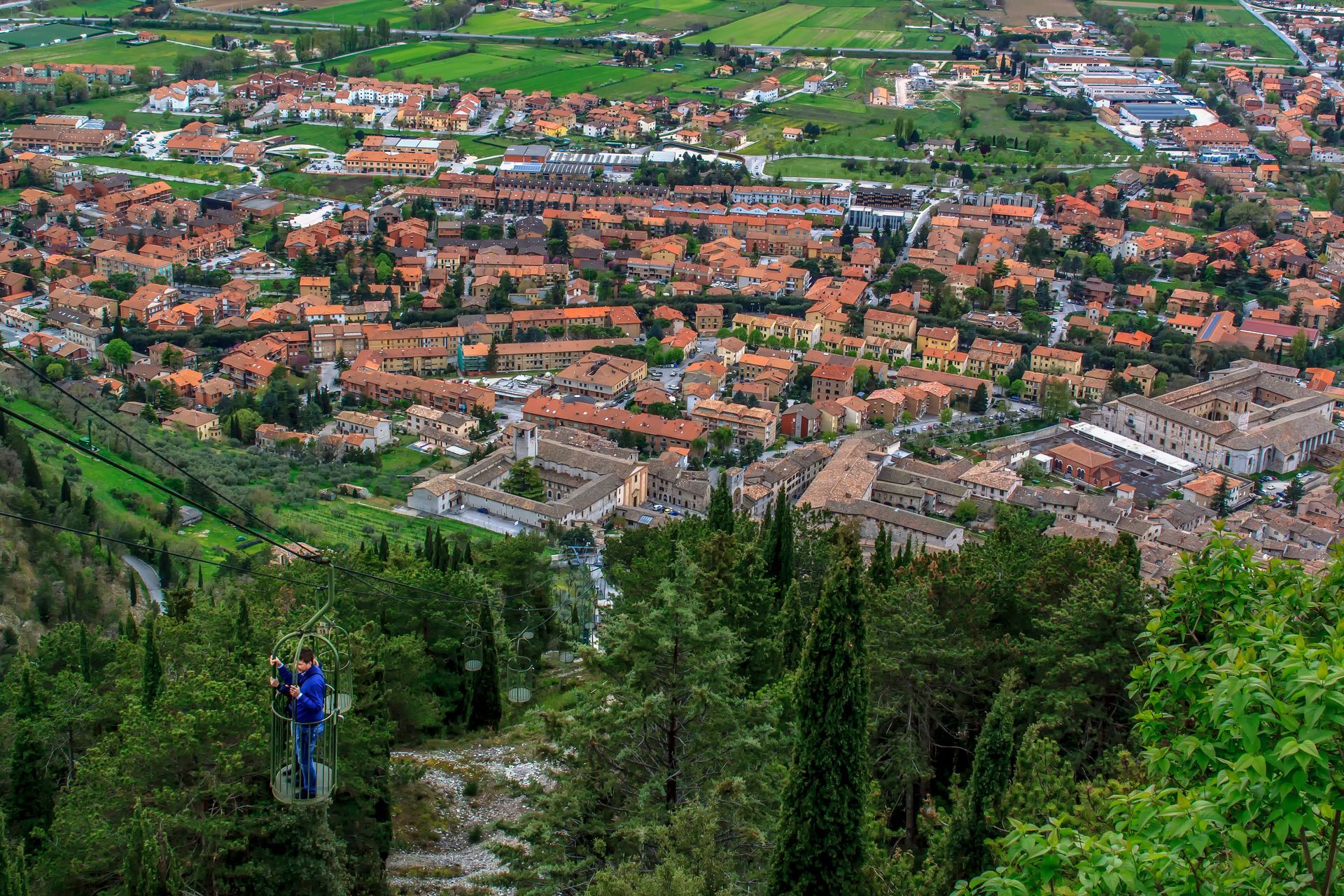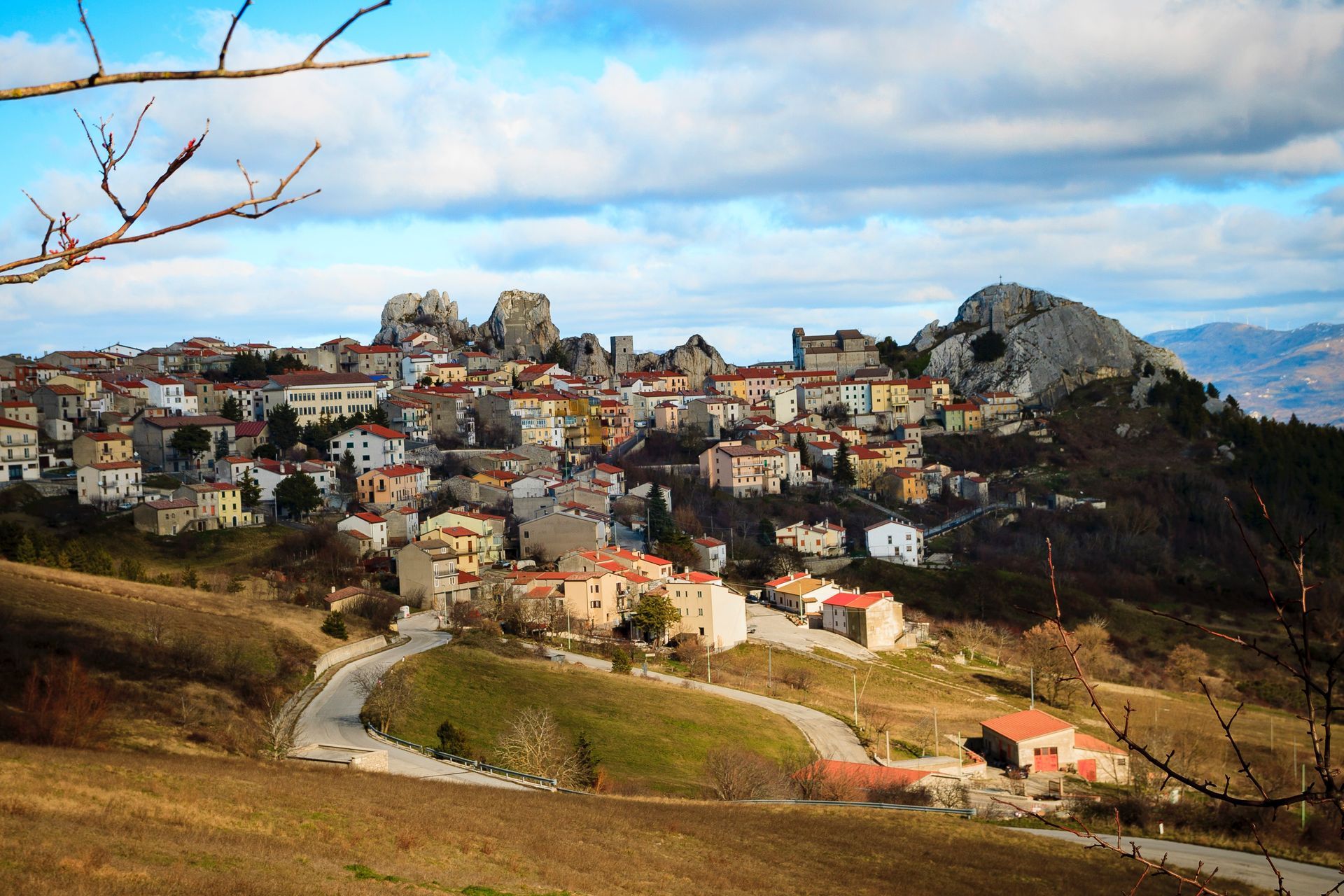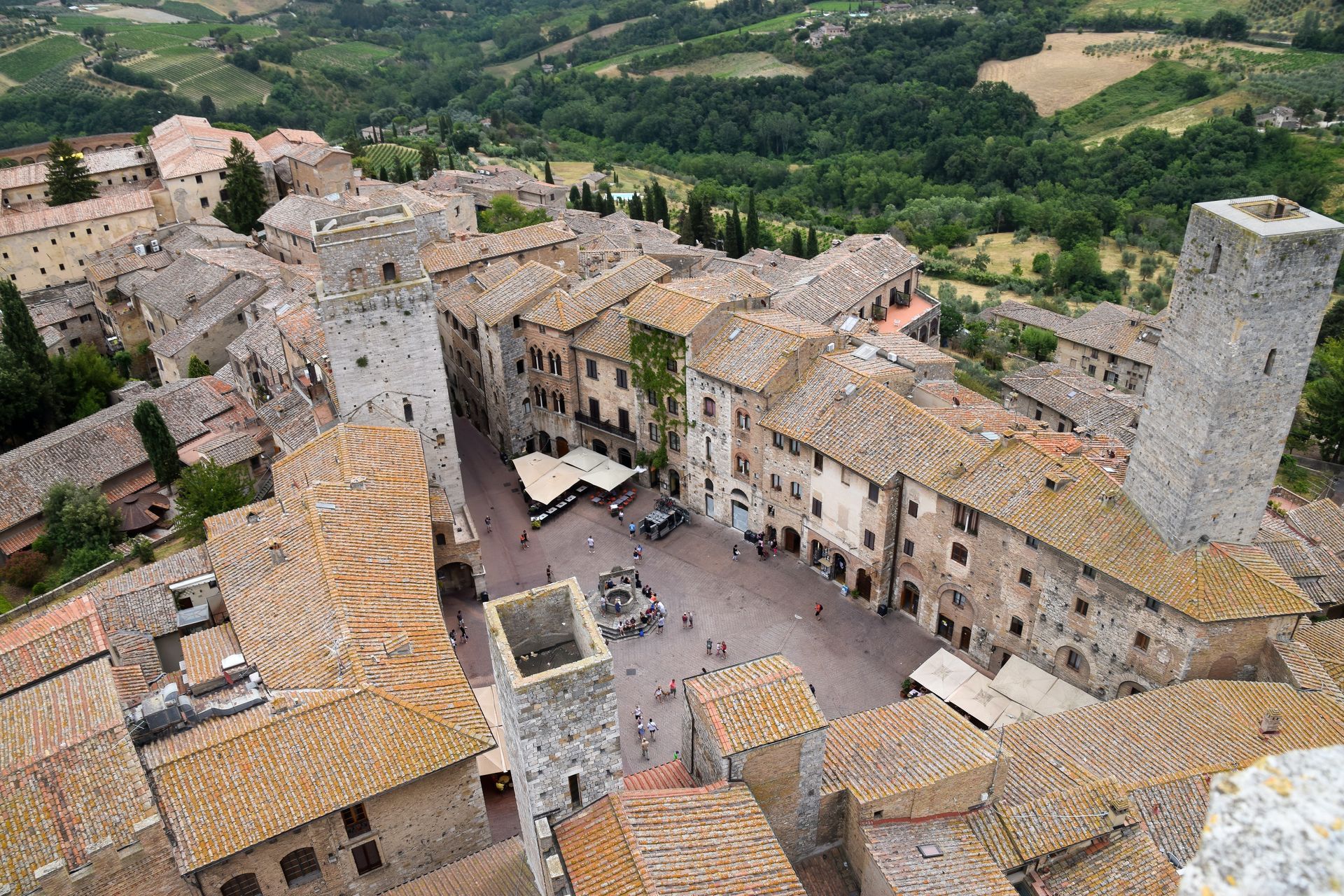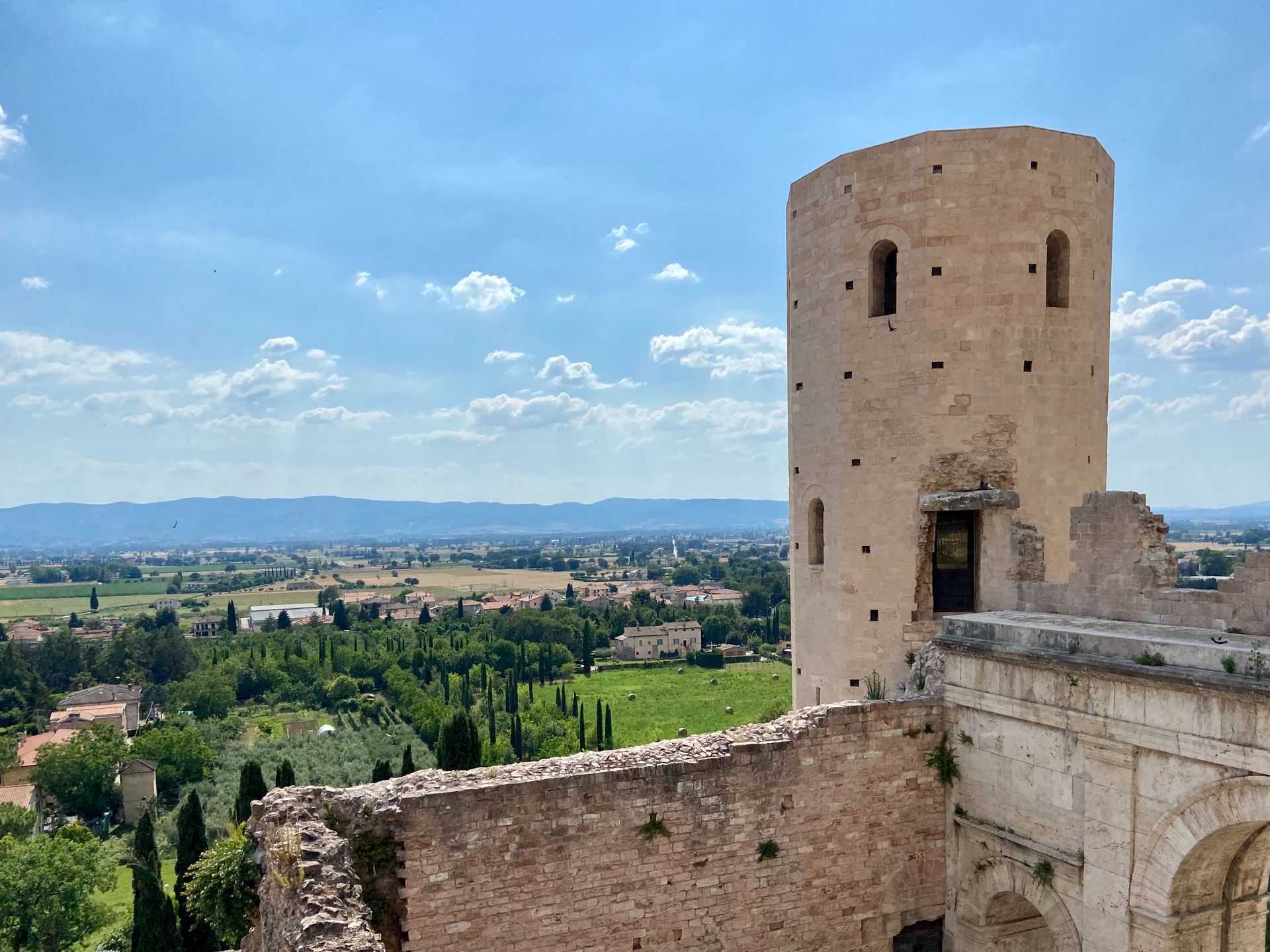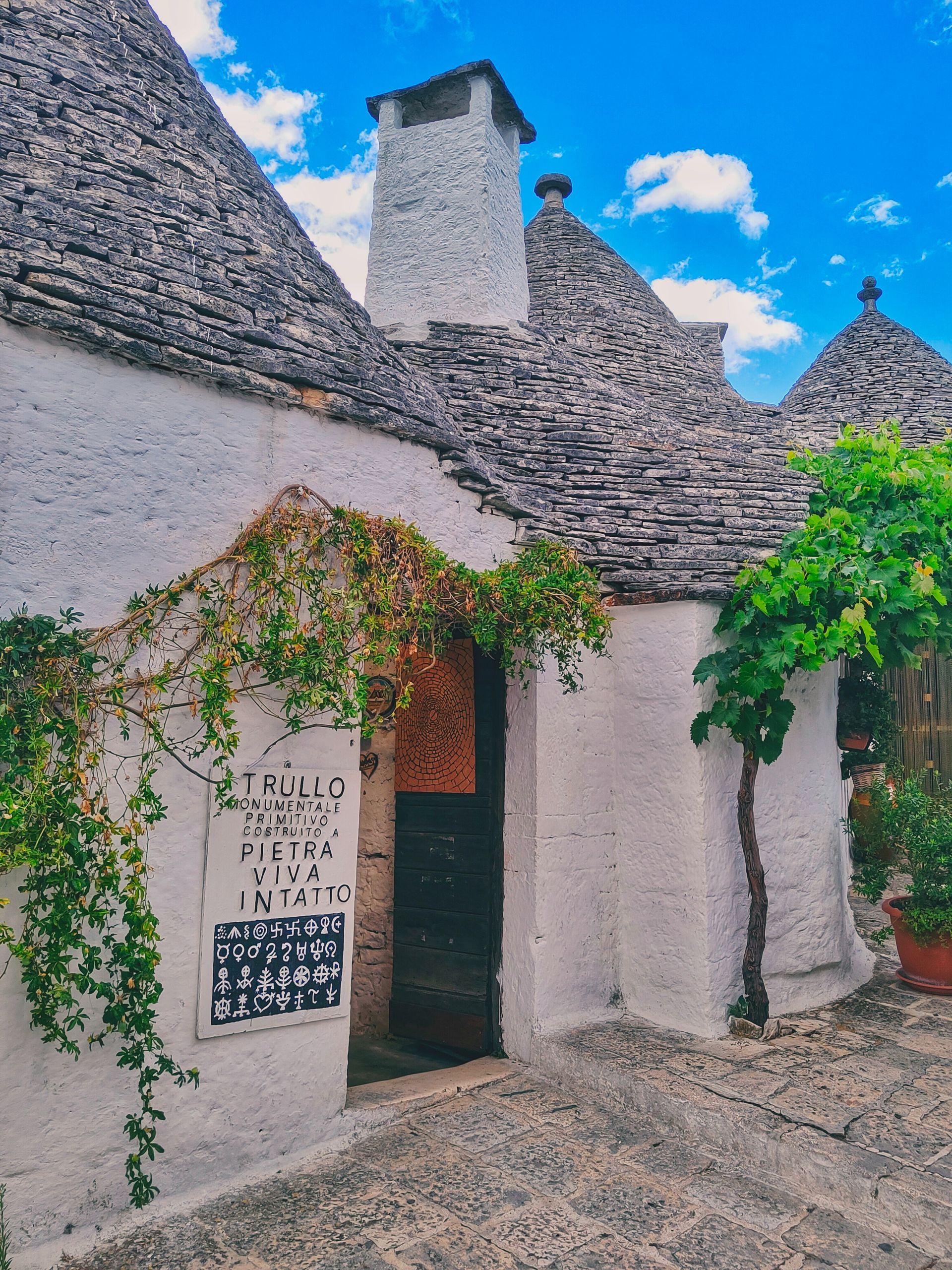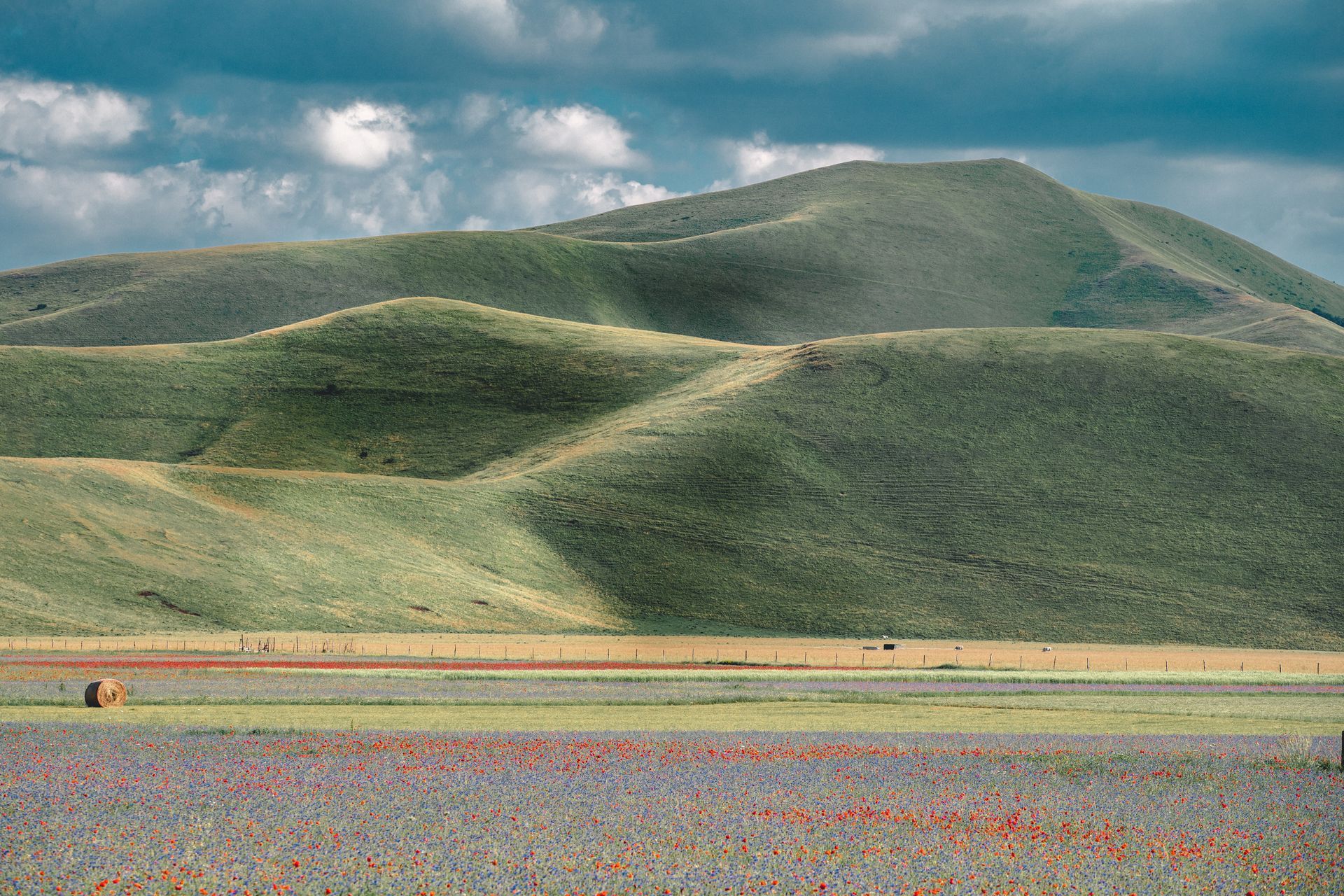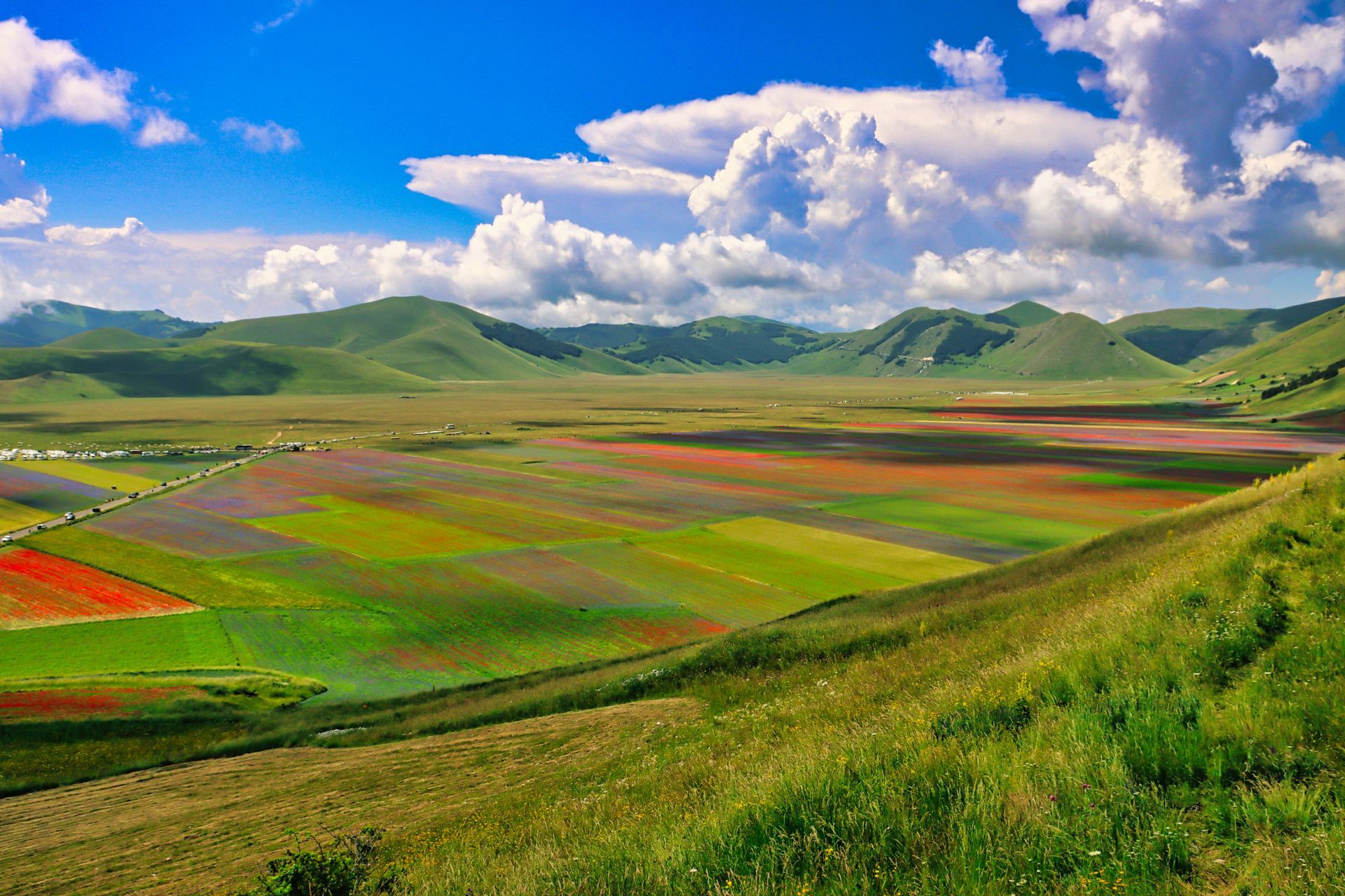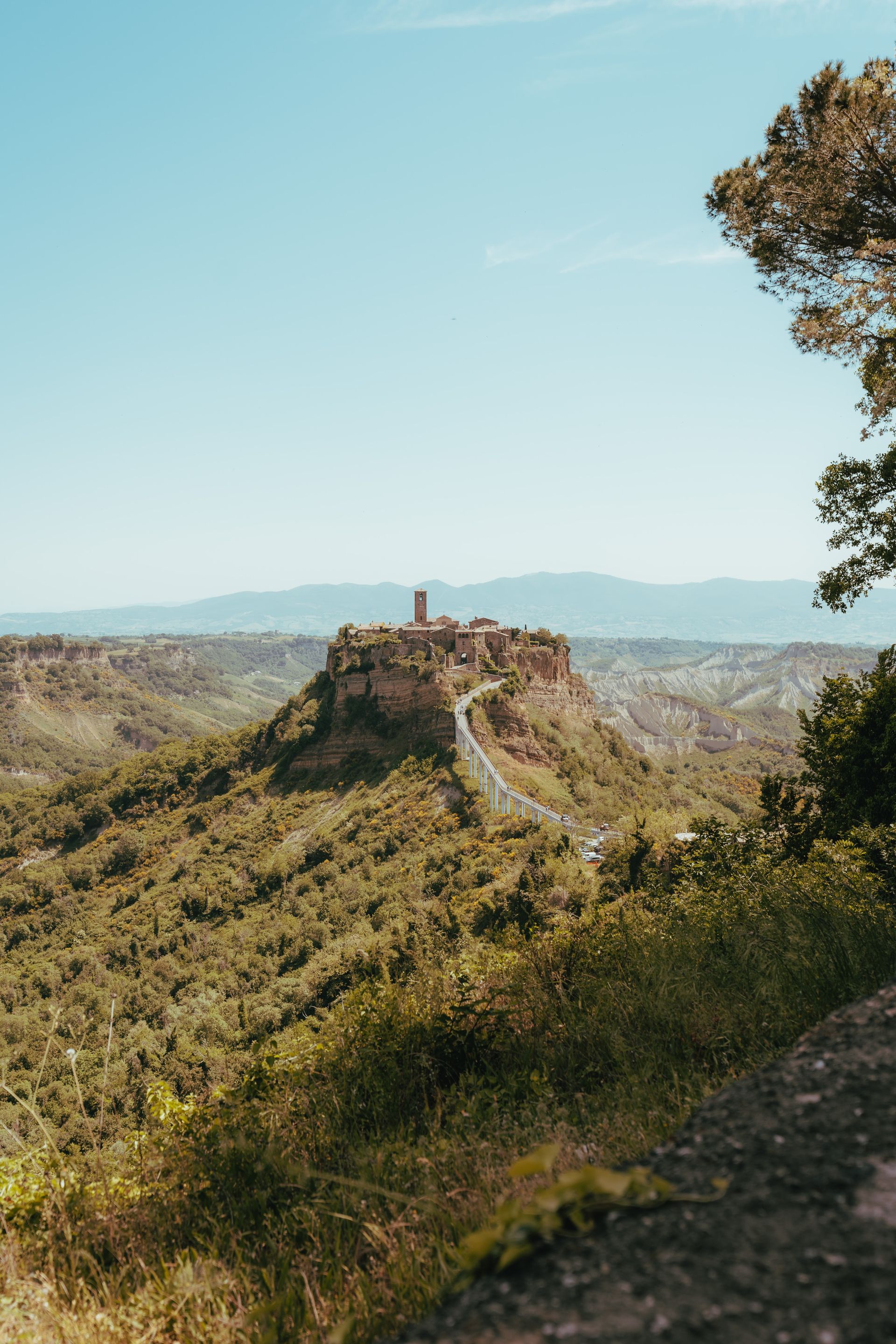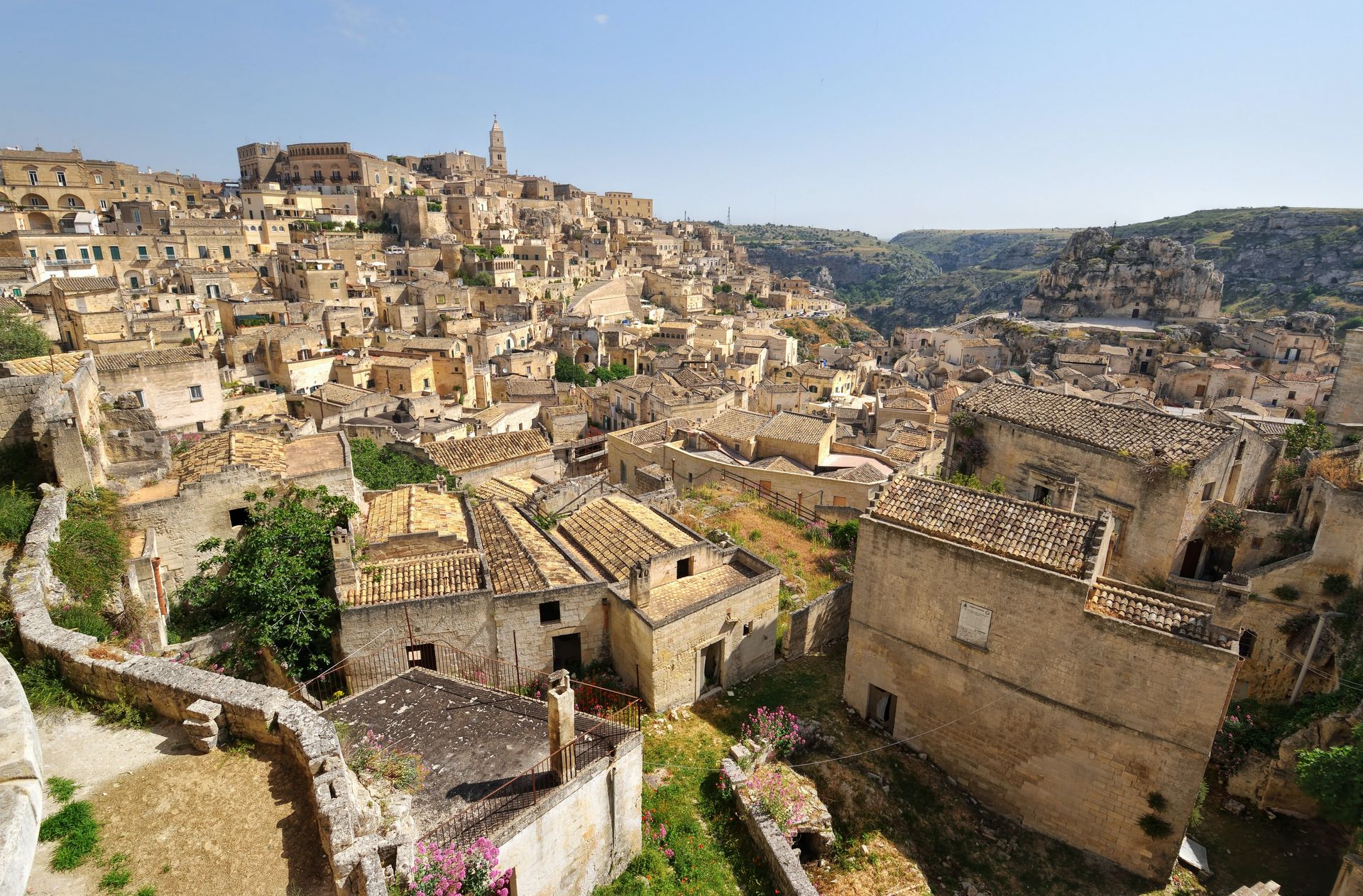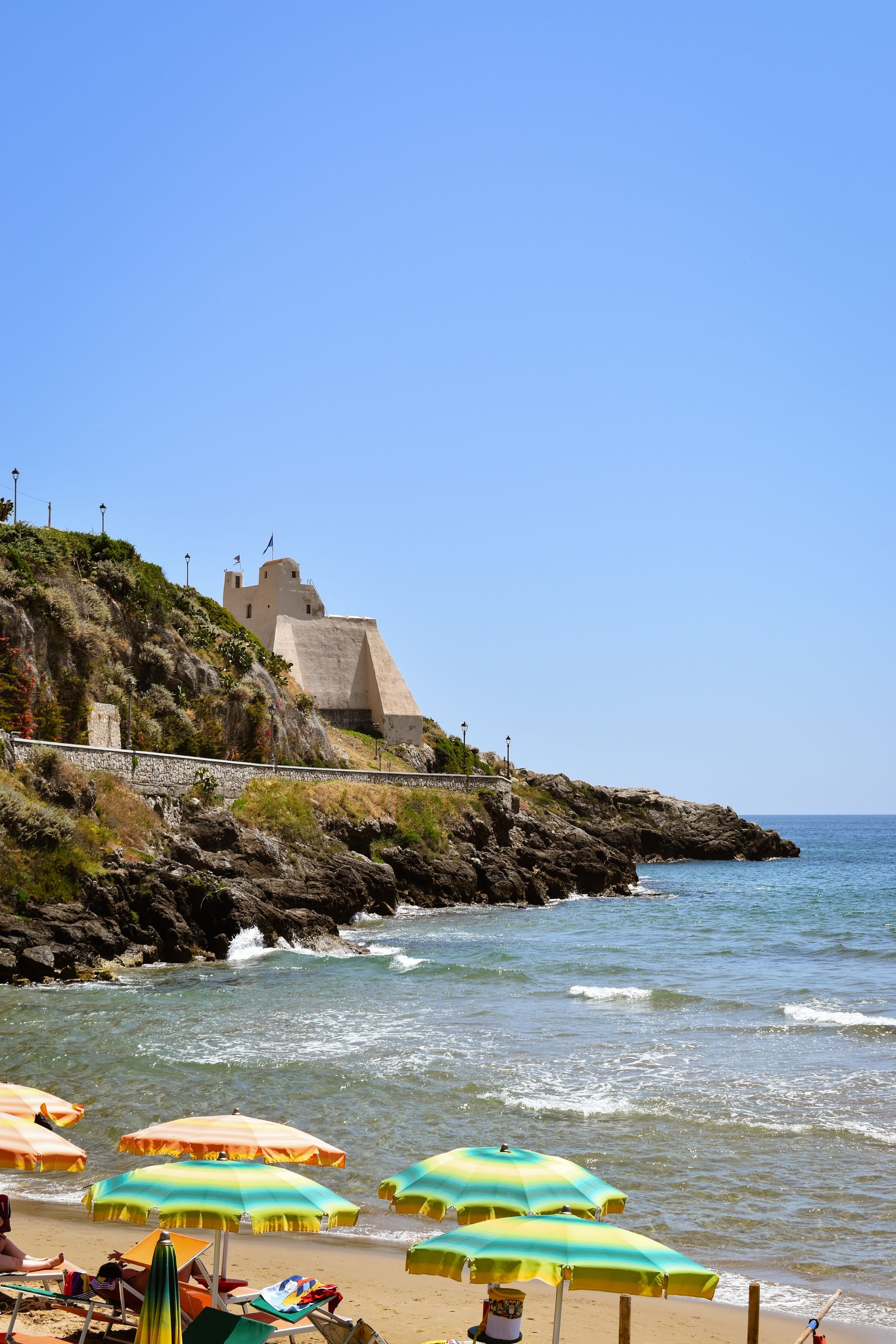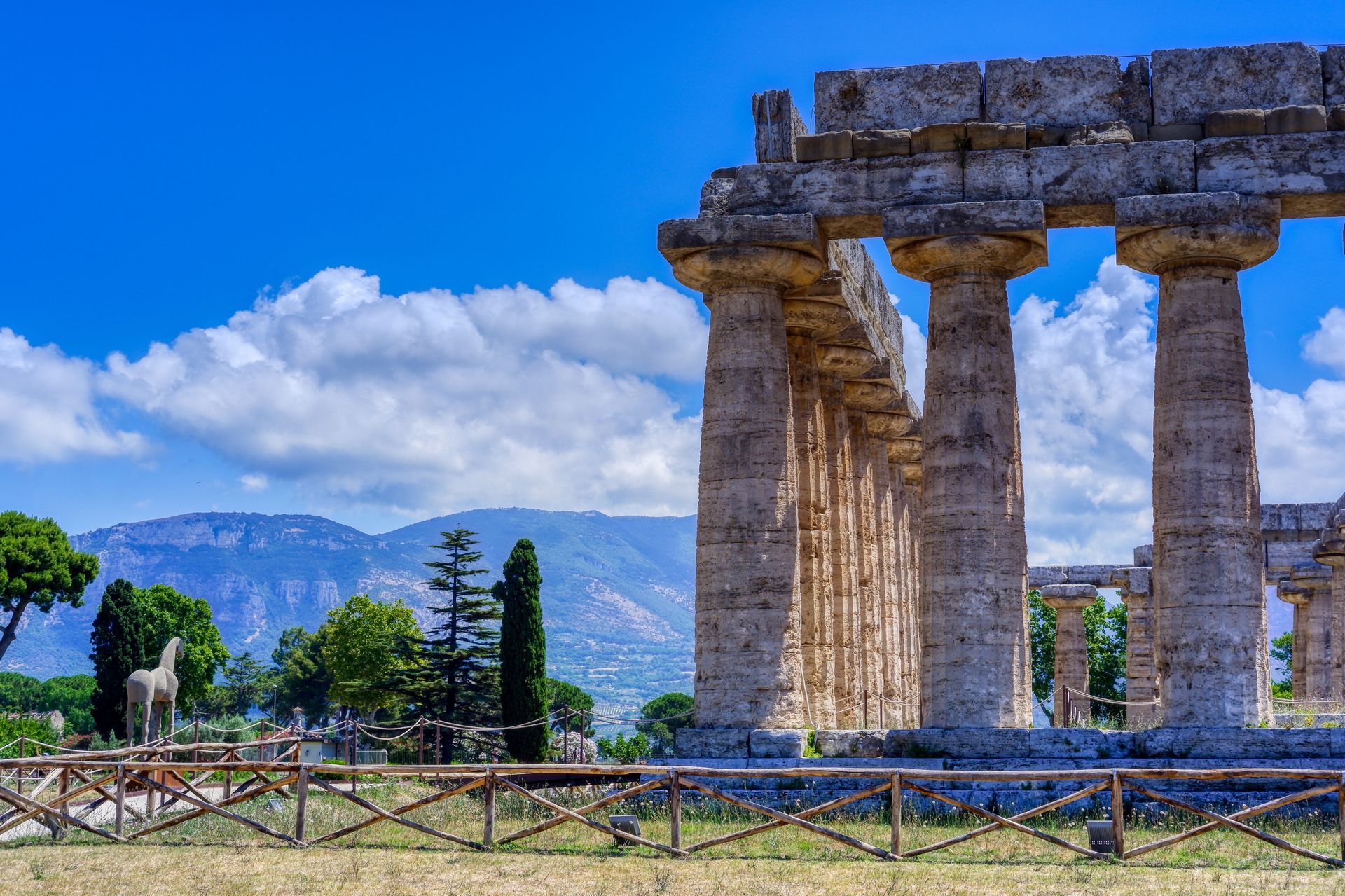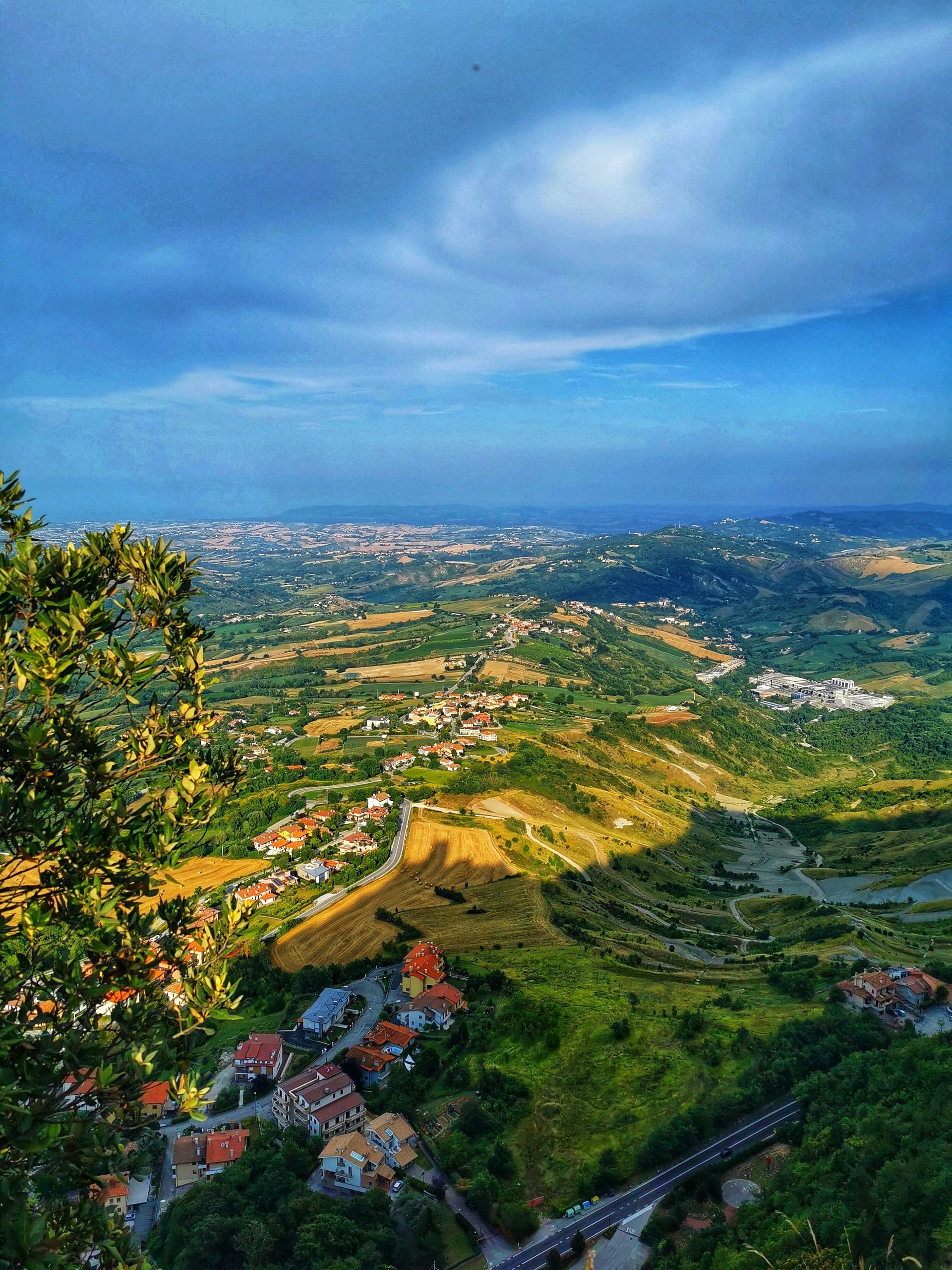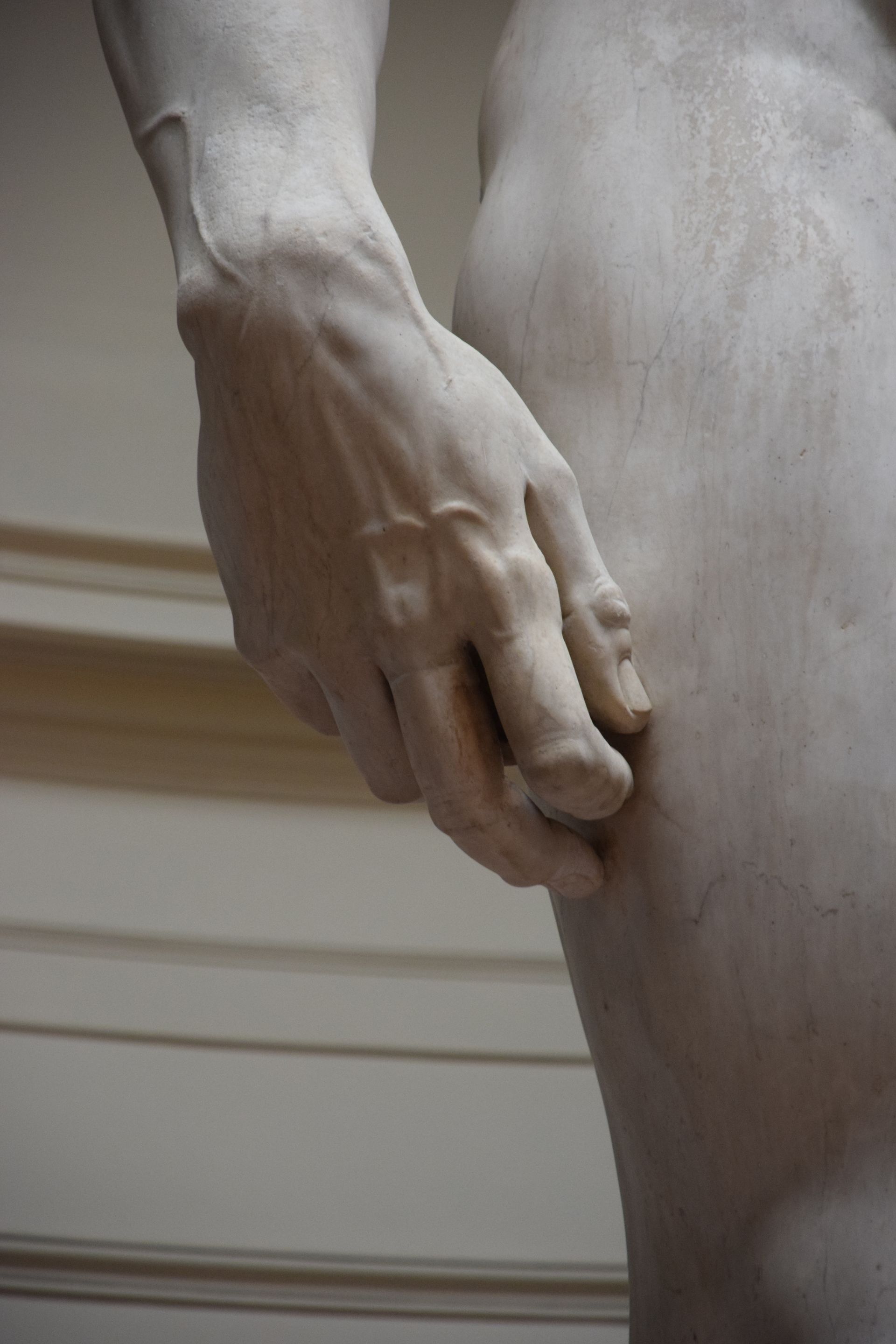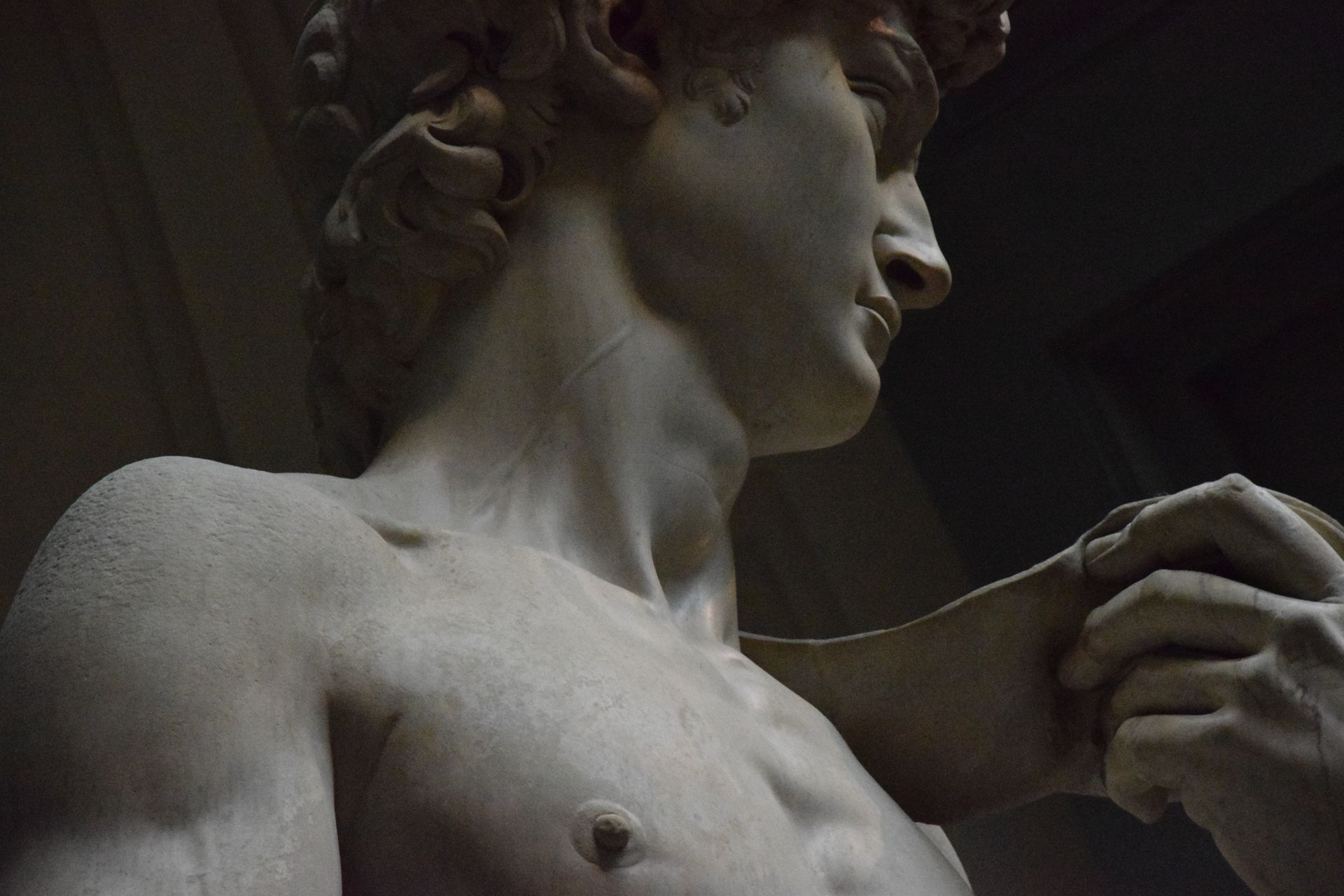Spreading Smile across the globe
Hidden Gems of Northern Italy
Hidden Gems of Italy are a testament to the country's diverse and enchanting beauty, often concealed from the traditional tourist routes. While Italy is celebrated for its iconic cities like Rome, Florence, Venice, and the Amalfi and Cinque Terre coasts, it's the lesser-known destinations that promise a unique journey. These unexplored regions offer travellers a chance to experience Italy's authentic culinary delights, rich historical narratives, and stunning natural landscapes. From the northern reaches to the southern shores, these Hidden Gems of Italy reveal a different facet of this remarkable nation.
Lake Orta - Piedmont
Hidden Gems of Italy come to life at Lake Orta, tucked away near the Swiss border in the heart of Piedmont. This hidden paradise often evades the spotlight compared to its more famous counterparts like Lake Como and Lake Garda. The historic town of Orta San Giulio, with its Baroque and Medieval architecture, cobbled streets, and idyllic Piazza Motta, enchants visitors. The glistening waters of the lake itself invite moments of serenity. What makes Lake Orta truly extraordinary is the mysterious island at its centre—a tranquil sanctuary inhabited by resident nuns.
Treviso - Veneto
Among the Hidden Gems of Italy, Treviso stands as a city in the Veneto region that retains its genuine northern Italian charm. Meandering through its narrow cobbled lanes, picturesque canals, and medieval city walls feels like a step back. Positioned on the fringes of the renowned Prosecco wine region, Treviso provides a delightful excuse for an aperitivo with a glass of Italy's renowned sparkling Prosecco.
Aosta Valley
Nestled among the bordering landscapes of Switzerland and France, the Aosta Valley showcases breathtaking alpine scenery, perched castles, and traditions that thrive throughout the year. When spring and summer arrive, the region's walking trails entice explorers. This season also brings lively festivals that celebrate folk traditions that date back to medieval times. Be sure to savour the local cheese Fontina, a culinary delight that embodies the spirit of this Hidden Gem of Italy.
Alba - Piedmont
Alba, a sought-after destination among Italy's hidden gems, is situated in the vineyards of the Langhe Hills. Once adorned with a hundred towers, Alba exudes a charming rural ambience. It's renowned for its autumn truffle festival, a gastronomic event that captures the essence of the region. Alba is also celebrated for its dark chocolate, hazelnut groves, white truffles, and prestigious wineries. It's from this very region that the sought-after Barolo wine originates.
Camogli - Liguria
Camogli, a typical and vibrant Italian seaside village on the Ligurian Riviera di Levante, perfectly embodies the spirit of the Hidden Gems of Italy. Towering, brightly painted houses dominate the town, and it has become a magnet for visitors seeking pristine beaches, Ligurian cuisine, the rustic fishing marina, Italian culture, and a tranquil natural setting. Camogli has earned its reputation for culinary excellence, focusing on fish and seafood, particularly anchovies and tuna, as well as the iconic pesto sauce made from basil and pine nuts.
Brescia - Lombardy
Hidden Gems of Italy often come alive through history, and Brescia is no exception. In this small city, history unfolds through a tapestry of architectural styles, spanning Roman, Medieval, Renaissance, Baroque, and even Art Deco. Walking through Brescia feels like a journey through time, and a visit to the captivating Piazza della Loggia, framed by a stunning Venetian-style palace at its heart, is a must for history enthusiasts.
Trieste
Trieste is a refreshingly unique destination, an Italian city positioned near the Slovenian border with its dialect that's a delightful blend of Austrian-German, Greek, Croatian, and Italian. Trieste's neoclassical waterfront is a sight to behold, with its marina brimming with stylish, glimmering yachts. The city's offerings include clear blue skies, expansive sandy beaches, city lidos, and the surrounding vineyards. Trieste is a Hidden Gem of Italy that belongs on every traveller's Northern Italian itinerary.
Modena - Emilia-Romagna
Modena is famed for its Hidden Gems of Italy, including balsamic vinegar, Luciano Pavarotti, the Romanesque cathedral, and the nearby Ferrari museum. Beyond these illustrious attractions, Modena reveals a treasure trove of remarkable restaurants. Massimo Bottura's Osteria Francescana has twice earned a place among the world's top 50 eateries, showcasing the culinary excellence of this Hidden Gem. While in Modena, don't miss the chance to savour local specialities like stuffed tortellini and sparkling Lambrusco wine, the perfect complement to your gastronomic journey.
Chiusa / Klausen - South Tyrol
Chiusa, also known as Klausen, is one of Italy's most picturesque villages. It is situated on the banks of the Isarco River in the South Tyrolean region near the Austrian border. Chestnut groves, green fields, vineyards, and farmsteads surround the town. In the village itself, visitors are captivated by narrow alleyways, coats of arms, large bay windows, crenellated facades, and the two main squares.
Ravenna - Emilia-Romagna
Ravenna offers a treasure trove of experiences among the Hidden Gems of Italy. This city is a feast for the senses, with its diverse offerings of food, music, art, culture, history, beaches, wine, and mosaics. Ravenna is home to eight UNESCO-listed sites, making it a must-visit for history and art enthusiasts. It's also known for its two-month-long music festival, Dante Alighieri's tomb, local culinary delights, nearby beach resorts, and the opportunity to explore pinewood forests. The city's fame is derived from its stunning mosaics, dating from the fifth and sixth centuries, scattered throughout the town.
In conclusion, Italy's Hidden Gems invite you to embark on a journey less travelled, where the rich tapestry of history, diverse cuisine, and breathtaking landscapes come to life. These lesser-known destinations provide an authentic Italian experience, away from the bustling crowds, revealing the nation's soul in its purest form. Explore these Hidden Gems to uncover Italy's hidden treasures.
Hidden Gems of Central Italy
Hidden Gems of Italy beckon the adventurous traveller to explore the lesser-known treasures that this remarkable country holds. From the picturesque valleys of Tuscany to the medieval charm of Umbria, the mysterious landscapes of Molise, and the architectural wonders of San Gimignano, these destinations promise unforgettable experiences.
Garfagnana - Tuscany
The Garfagnana region is a hidden gem in the beautiful Tuscan valley north of Lucca. It is crossed by the Serchio River, and the landscape is characterized by fertile greenery, rugged mountains, and charming villages. Outdoor activities such as hiking, walking, and mountain biking are enjoyed by many people in this area. Garfagnana is home to several one-of-a-kind attractions, including a ghost town, a wind cave, and the Devil's Bridge at Borgo a Mozzano.
Gubbio - Umbria
Umbria hides many treasures, and a particular favourite among Hidden Gems of Italy is the Medieval hilltop town of Gubbio. Gubbio, a city with a history dating back over 2,000 years, is a maze of cobbled streets and stone buildings that have been perfectly preserved. Visitors can take a cable car to the summit of Mount Ingino to enjoy panoramic views of the surrounding area. In addition, Gubbio hosts Italy's oldest event, the Corsa dei Ceri, in which teams race through the streets carrying massive wooden candles.
Molise
Molise is Italy's second-smallest region and one of its best-kept secrets. Hidden Gems of Italy are plentiful here. The picturesque town of Agnone is renowned for its artisanal bells, produced by the oldest family-run bell foundry in the world. Meanwhile, Campobasso, the regional capital, boasts a stunning medieval old town. Molise offers a captivating mix of historical charm and natural beauty, with rugged mountains, rolling hills, and pristine beaches along the Adriatic coast.
San Gimignano - Tuscany
Nestled in the heart of Tuscany, San Gimignano boasts medieval architecture and, of course, its famous towers. The town's historic centre is a UNESCO World Heritage site, known for its fourteen stone towers that once symbolised wealth and power. San Gimignano offers a glimpse into medieval Tuscany, with well-preserved streets and squares that transport visitors to another time. Besides the towers, make sure to explore the Collegiate Church and indulge in the local Vernaccia wine, a crisp white wine produced in the region.
Spello - Umbria
Another gem in the heart of Italy, Spello enchants visitors with its winding medieval streets and stunning floral displays. Known as the "Città Infiorata" or "flower town," Spello hosts the Infiorata festival, during which the streets are carpeted with intricate flower petal designs. This event occurs in early June and is a magnificent spectacle. Outside of the festival, Spello's charm continues with its well-preserved historic centre and beautiful churches.
Trulli of Alberobello - Apulia
Apulia, or Puglia, is famous for its unique trulli houses, and Alberobello is the epicentre of this architectural marvel. These whitewashed conical homes are a UNESCO World Heritage Site that offers a glimpse into the region's history. Visitors can even stay in trulli that have been converted into accommodations, providing a truly immersive experience.
Norcia - Umbria
Nestled in the Sibillini Mountains, Norcia is renowned for its gastronomy. This charming town produces exceptional cured meats, particularly prosciutto and salami. For food enthusiasts, Norcia is a true Hidden Gem of Italy. Explore local shops, taste the region's specialities, and visit the beautiful town square. Nature enthusiasts will also find hiking trails and natural beauty in the nearby Monti Sibillini National Park.
Montefalco - Umbria
Montefalco is often called the "Balcony of Umbria" for its stunning views over the surrounding valley. This charming town is also known for its wine, particularly Sagrantino, one of Italy's most robust red wines. Montefalco's medieval centre is picturesque and hosts several churches with remarkable frescoes, making it a cultural and gastronomic gem.
Castelluccio di Norcia - Umbria
High in the Sibillini Mountains, Castelluccio di Norcia is a quaint village known for its stunning wildflower blooms in late spring and early summer. The surrounding plateau becomes a colourful tapestry, attracting photographers and nature enthusiasts. Besides the flowers, visitors can enjoy hiking and take in the breathtaking scenery. Hidden Gems of Italy like Castelluccio di Norcia provide a unique connection to nature and the changing seasons.
In the heart of Italy, a treasury of Hidden Gems awaits the intrepid traveller. From the mysterious ghost town of Garfagnana to the ancient charms of Gubbio, the enchanting landscapes of Molise, and the medieval splendours of San Gimignano, these lesser-known destinations reveal Italy's diverse beauty and rich history. Journey through the tranquil streets of Spello, marvel at the unique trulli houses in Alberobello, savour the culinary delights of Norcia, and bask in the vibrant blooms of Castelluccio di Norcia. These Hidden Gems of Italy promise an unforgettable adventure in a land of timeless wonder.
Hidden Gems of Southern Italy
Italy, a land of rich history, captivating art, and exquisite cuisine, is known for its iconic cities and world-famous landmarks. Despite the tourist-filled streets and crowded piazzas, the country holds many hidden gems—lesser-known destinations that offer a more intimate and authentic experience. These places, tucked away in various corners of Italy, are a testament to the nation's diverse and enchanting beauty, waiting to be explored by the discerning traveller. From medieval towns perched atop hills to charming coastal villages and ancient archaeological sites, the Hidden Gems of Italy promise unique adventures and unforgettable memories.
Civita di Bagnoregio - Lazio
Civita di Bagnoregio is often called the "Dying Town" because of its gradual erosion over the centuries. This medieval village is perched on a hilltop and can only be reached by a long footbridge. It's a unique destination, seemingly suspended in time, and is the perfect Hidden Gem for history buffs and photographers.
Matera - Basilicata
Matera, known for its cave dwellings, is one of Italy's most intriguing and unique destinations. The Sassi di Matera, a historic cave settlement, is a UNESCO World Heritage Site. Matera is gaining popularity but still qualifies as one of the Hidden Gems of Italy. Touring this labyrinth of stone-carved rooms and narrow streets offers an incredible historical journey.
Sperlonga - Lazio
Sperlonga is a charming coastal town characterized by its pristine beaches, winding alleys, and picturesque piazzas. Nestled between Rome and Naples, Sperlonga is often overlooked by travellers. A visit here reveals a relaxed and authentic Italian atmosphere, perfect for strolls and seaside relaxation. Take advantage of the Grotto of Tiberius, a cave once used as the emperor's villa and now a museum.
Paestum - Campania
The ancient ruins of Paestum, originally a Greek colony known as Poseidonia, provide an extraordinary window into Italy's history. The temples are exceptionally well-preserved, ranking among the best-preserved in the world. Paestum is also home to a fascinating archaeological museum that displays artefacts from the site. Enjoy a step back in time amid the Hidden Gems of Italy.
Castro - Apulia
Castro, a picturesque coastal town, boasts a historic centre perched on a rocky outcrop. Visitors can explore ancient churches, fortifications, and a charming harbour. Castro also has sea caves that can be explored by boat. The region's cuisine is a seafood lover's paradise, making this town a Hidden Gem for food enthusiasts as well.
Scilla - Calabria
Scilla, an idyllic coastal village in Calabria, offers stunning sea views and hidden beaches. The town is known for the Ruffo Castle, which dominates the landscape, and the legendary sea monster Scylla from Greek mythology. The charming village is a serene and lesser-known alternative to some of the more crowded Italian seaside destinations.
San Marino
San Marino is a microstate surrounded by Italy and is one of the world's oldest republics. It's a destination that's often missed, making it a true Hidden Gem. San Marino boasts dramatic mountaintop views, historic architecture, and unique attractions like the Guaita Tower and the Palazzo Pubblico. For collectors, the country is also known for its beautiful stamps and coins.
Conclusion
Discovering the Allure of Hidden Gems of Italy
Hidden Gems of Italy offers travellers an authentic experience, far removed from the tourist-packed cities and famous landmarks. These lesser-known destinations unravel the genuine charm, culture, history, and culinary wonders that make Italy an endlessly fascinating country to explore. From the mountains of the North to the coasts of the South, each region holds its treasures, waiting to be discovered by those who venture off the beaten path. By exploring the Hidden Gems of Italy, you can craft a unique and unforgettable journey that deepens your appreciation of this incredible country. Plan your trip carefully, and you will be rewarded with the beauty, history, and flavours that characterize these enchanting places.
What is the statue of David holding
Standing as a timeless symbol of artistic brilliance and human perfection, the Statue of David, sculpted by the renowned Italian artist Michelangelo, transcends the bounds of time and culture. This iconic masterpiece has captivated the world for centuries, embodying the essence of the Renaissance era and standing as a testament to the unparalleled creativity of its creator.
Crafted with meticulous attention to detail, the Statue of David is more than a mere sculpture; it is a celebration of the boundless potential inherent in the human form. Michelangelo's skillful hands brought forth a figure of exquisite beauty, harmonizing classical aesthetics with a profound understanding of anatomy.
The Statue of David's marble form, standing at an imposing height, radiates a sense of strength, grace, and intellectual prowess. Its pose, with a poised contrapposto stance, exemplifies the perfect fusion of art and anatomy, showcasing the artist's ability to breathe life into stone.
As an enduring symbol of artistic achievement, the Statue of David has become synonymous with the Renaissance's cultural rebirth. Its influence extends beyond the realms of art, resonating with those who marvel at the potential for greatness within humanity. The statue's legacy persists, inspiring generations to appreciate the power of creativity, skill, and the eternal pursuit of perfection in both art and life.
Michelangelo's Magnum Opus:
Commissioned in the early 16th century as a key element of a larger artistic project, Michelangelo's David swiftly transcended its initial role. Far more than a mere component of a collective vision, the statue emerged as a singular masterpiece, its meticulous craftsmanship and breathtaking detail setting it apart from the intended ensemble.
Carved from a single block of Carrara marble, the Statue of David commands attention with its imposing height of 17 feet. This elevation not only emphasizes the physical presence of the sculpture but also serves as a testament to Michelangelo's mastery in sculpting the intricate nuances of the human anatomy. The utilization of Carrara marble, renowned for its purity and luminosity, further enhances the statue's ethereal quality, lending it an almost divine aura.
As Michelangelo's chisel delicately shaped each contour, the Statue of David became a symphony of form and expression. The artist's unparalleled skill breathed life into the marble, transforming it into a powerful representation of human potential. David's poised contrapposto stance and the subtle details, from the intricacies of the hair to the veins in the hands, showcase not only the sculptor's technical prowess but also his profound understanding of the human body.
Beyond its initial commission, the Statue of David stands as a beacon of artistic achievement, embodying the spirit of the Renaissance. Michelangelo's transformative touch turned a mere block of stone into an enduring symbol of beauty, intellect, and the eternal pursuit of excellence—an iconic representation of the boundless possibilities within the realm of human creativity.
Symbolism and Significance:
Beyond its unparalleled artistic excellence, the Statue of David carries profound symbolic weight. Depicting the biblical hero David, who triumphed over the giant Goliath with nothing but a sling, the statue becomes a powerful metaphor for the victory of virtue and courage over seemingly insurmountable adversity. Michelangelo's interpretation captures not only the physical prowess of David but also the indomitable spirit that empowers the human soul to conquer challenges with resilience and determination.
This artistic marvel transforms into a cultural and symbolic treasure, drawing millions of visitors annually into a mesmerizing encounter with one of the greatest sculptures in history. As admirers stand before the towering figure, they are confronted not only by the skillful craftsmanship but also by the timeless narrative encapsulated in the stone. The Statue of David becomes a beacon, inviting contemplation on the enduring themes of heroism, human potential, and the triumph of good over evil.
The statue's narrative resonance extends beyond its original biblical context, resonating with individuals from various backgrounds and beliefs. It serves as a universal symbol of resilience, inspiring awe and reverence in those who encounter its imposing presence. The Statue of David stands as a testament to the enduring power of art to transcend cultural boundaries and speak to the shared human experience.
In this way, the Statue of David becomes more than a static sculpture; it is a dynamic conduit for reflection, sparking conversations about the timeless themes that bind humanity together. As an artistic and cultural magnet, it continues to captivate hearts and minds, inviting each visitor into a profound dialogue with the past and an appreciation for the enduring significance of virtuous triumphs depicted in stone.
Venue at the Accademia Gallery:
The Statue of David has found its eternal residence within the hallowed halls of the Accademia Gallery in Florence, Italy. This cultural institution not only serves as a custodian of Michelangelo's masterpiece but also provides a sublime backdrop for visitors to immerse themselves in its unparalleled beauty. As one steps into the gallery, the statue immediately commands attention, standing as a crowning jewel amid a rich tapestry of artistic treasures.
The Accademia Gallery itself is a sanctuary for art enthusiasts, a place where the echoes of creativity reverberate through time. Here, the air is charged with the collective energy of masterpieces, creating an ambiance that elevates the experience of encountering the Statue of David. The gallery's carefully curated setting enhances the intimate connection between admirers and the sculpted hero, inviting contemplation and fostering a deep appreciation for the intricacies of Michelangelo's craftsmanship.
For art pilgrims and enthusiasts alike, the Accademia Gallery becomes a destination of profound significance. It offers not merely a glimpse but an immersive and transformative experience with the Statue of David. Visitors find themselves in the presence of a cultural icon, surrounded by an atmosphere that pays homage to the artistic legacy of Florence and the Renaissance era.
The gallery stands as more than a repository of art; it is a sacred space where the Statue of David becomes a focal point for reflection and admiration. Each visitor, enveloped in the gallery's aura, is granted the privilege of witnessing not just a sculpture but a testament to human ingenuity and the enduring power of artistic expression. In this intimate setting, the Statue of David continues to weave its narrative, captivating generations and solidifying its place as an eternal symbol of artistic brilliance and cultural heritage.
Enduring Legacy:
The legacy of the Statue of David radiates far beyond the confines of its permanent home at the Accademia Gallery. Reproductions and adaptations of this iconic sculpture echo across the globe, gracing art collections, educational institutions, and public spaces worldwide. Whether meticulously replicated in various mediums or creatively reimagined, the statue's influence transcends time and geography, affirming its status as a cultural touchstone.
These reproductions serve as ambassadors of Michelangelo's genius, bringing the essence of the Statue of David to audiences who may never set foot in Florence. From educational institutions where students study its form and technique to public squares where replicas stand as tributes to artistic heritage, the widespread presence of the statue emphasizes its universal appeal.
The enduring popularity of the Statue of David speaks to its ability to resonate with people across diverse cultures and backgrounds. Its profound impact on the world of art and culture is evidenced by the countless interpretations and tributes that continue to emerge. The statue's symbolic significance, embodying the triumph of human spirit and artistic achievement, transcends linguistic and cultural barriers, uniting admirers in a shared appreciation for its beauty and narrative depth.
In this way, the Statue of David becomes not just a relic of the Renaissance but a living testament to the enduring power of art to inspire, provoke thought, and evoke emotion. Its presence, replicated and adapted, continues to enrich the global artistic landscape, inviting individuals from all walks of life to engage with the timeless themes it embodies. As a cultural ambassador, the Statue of David remains a beacon, guiding conversations about the interplay between tradition and innovation, the universality of human experience, and the everlasting resonance of artistic brilliance.
What is Michelangelo's statue of David holding?
Michelangelo's Statue of David is an enduring masterpiece that continues to captivate art enthusiasts and historians alike. Standing at an impressive 17 feet tall, this iconic marble sculpture is renowned for its impeccable craftsmanship, classical proportions, and the profound narrative it conveys. As we delve into the intricacies of Michelangelo's magnum opus, one question often arises: What is Michelangelo's Statue of David holding?
At first glance, the statue presents a commanding figure of a young man, poised in a state of readiness. His gaze is focused, and his body exhibits a sense of quiet strength and determination. In his left hand, Michelangelo sculpted David clutching a sling, a detail that holds significant symbolic weight. This small yet crucial element is a reference to the biblical story of David and Goliath found in the Book of Samuel.
According to the biblical narrative, David, a young shepherd, defeats the towering Philistine giant Goliath with nothing more than a sling and a single stone. The sling in David's hand symbolizes his resourcefulness, courage, and intelligence in the face of overwhelming odds. Michelangelo's meticulous attention to detail brings this narrative to life, showcasing the sculptor's ability to convey both physical and emotional depth.
The inclusion of the sling not only adds a layer of historical and biblical context to the statue but also underscores its broader thematic significance. The Statue of David becomes a symbol of the triumph of virtue, intellect, and bravery over seemingly insurmountable challenges. It represents the potential for the individual, armed with determination and resilience, to overcome adversity and achieve greatness.
In Michelangelo's hands, the choice of portraying David with a sling transforms a classical depiction of the human form into a profound storytelling device. The artist's genius lies not only in his technical prowess but also in his ability to infuse his creations with narrative richness. The Statue of David, with its carefully considered details, invites viewers to explore the depths of its symbolism and appreciate the timeless lessons it imparts.
As admirers stand before this monumental work of art, they are not merely observing a sculpture; they are engaging with a narrative that transcends time and resonates with themes of courage, intellect, and the indomitable spirit of the human journey. Michelangelo's Statue of David, holding a sling as a symbol of triumph, continues to inspire awe and contemplation, inviting us to reflect on the enduring power of art to convey profound truths about the human experience.
Conclusion:
In the realm of art and cultural heritage, the Statue of David stands as a towering testament to the boundless potential of human creativity and the enduring resonance of masterful craftsmanship. From its origins in the early 16th century, commissioned as part of a larger artistic project, to its current residence in the Accademia Gallery in Florence, the statue has transcended its initial purpose, becoming a global icon that transcends time and geography.
The Accademia Gallery provides an unparalleled setting for Michelangelo's masterpiece, offering visitors an intimate and profound encounter with the sublime beauty of the Statue of David. Within this cultural sanctuary, the statue assumes a central role, captivating the imagination and hearts of art enthusiasts who embark on a pilgrimage to witness its splendor. The gallery, with its rich ambiance and curated surroundings, transforms the experience of viewing the statue into a transformative journey through the annals of artistic brilliance.
However, the legacy of the Statue of David extends far beyond the confines of the Accademia Gallery. Reproductions and adaptations of this iconic sculpture have proliferated across the globe, finding homes in art collections, educational institutions, and public spaces. Its universal appeal underscores the statue's profound impact on the world of art and culture, serving as a cultural ambassador that bridges diverse communities and transcends linguistic and cultural boundaries.
As admirers encounter the statue, whether in its original form or through replicas, they are drawn into a narrative that extends beyond physical form—an exploration of the triumph of virtue and courage over adversity. The enduring popularity of the Statue of David reaffirms its status as a timeless symbol, inviting individuals to engage with themes of resilience, artistic achievement, and the shared human experience.
In conclusion, the Statue of David is not merely a sculpted figure but a living testament to the enduring power of art. Its legacy is etched not only in marble but in the hearts and minds of those who, across centuries and continents, continue to be captivated by its sublime beauty and the profound narratives it weaves through the tapestry of human history.
Things To Do | Travel Information | Local's Favourites








